





Organizations representing the country’s independent automotive repairers, collision repair experts and leading automakers announced July 11 they inked a landmark agreement on automotive right to repair, but two other organizations objected, calling it a thinly veiled attempt to confuse lawmakers and drivers.
The Auto Care Association (ACA), an original signatory to the 2014 MOU, said it was not consulted about, was not a party to and does not support the new pact. ACA said ASA and SCRS, who did not sign or support the 2014 MOU, represent a small fraction of the independent repair market and do not speak for the automotive aftermarket.
Crash Champions is proud to announce founder and CEO Matt Ebert has been named by Ernst & Young, LLP as a winner of the Entrepreneur Of The Year® Midwest Award. The announcement was made during a special ceremony hosted June 21 in Chicago.
The commitment among the Automotive Service Association (ASA), the Society of Collision Repair Specialists (SCRS) and Alliance for Automotive Innovation (AAI) was meant to affirm a 2014 Memorandum of Understanding (MOU) on automotive right to repair, stating “independent repair facilities shall have access to the same diagnostic and repair information that auto manufacturers make available to authorized dealer networks.”
“The agreement between the AAI, ASA and SCRS is a thinly veiled response by the automotive OEMs to HR 906: the REPAIR Act,” ACA said. “While the agreement purports to be relevant, all it does is affirm the 2014 MOU rather than implement a meaningful solution to preserve the entire automotive aftermarket and the competition and consumer choice that it creates.”
The CAR Coalition also questioned the impetus behind the pact and reiterated its support for the SMART and REPAIR acts.
In a letter to Congress outlining the pact, ASA, SCRS and AAI wrote: “This commitment was created with our mutual and valued customers in mind: vehicle owners. It affirms that consumers deserve access to safe and proper repairs throughout a vehicle’s lifecycle [and] it is built to
l CONTINUED ON PAGE 16
Entrepreneur Of The Year is one of the preeminent and most competitive business awards for entrepreneurs and leaders of high-growth companies across the world. Ebert was named one of 35 finalists in May, and as a winner of the Midwest region, now moves on to compete and be recognized at the Entrepreneur of the Year National Awards ceremony in November at the annual Strategic Growth Forum.
“It’s an honor to be recognized
REGIONAL NEWS
alongside some of the most accomplished business leaders from the Midwest,” Ebert said. “This award is indeed a true reflection of the Crash Champions team. Entrepreneurship is about surrounding yourself with great people who are committed to a singular vision. Throughout
l CONTINUED ON PAGE 22
A Kansas City, MO, man who formerly lived in Columbia, MO, pleaded guilty in federal court to his role in a $1.1 million insurance fraud conspiracy that involved false claims of injuries suffered in car accidents, as well as to his role in a conspiracy to fraudulently obtain COVID-19 relief benefits.
Lawrence Courtney Lawhorn , 35, pleaded guilty before U.S. Magistrate Judge Willie J. Epps Jr. on June 8 to the charges contained in two separate federal indictments.
In the first indictment, Lawhorn pleaded guilty to one count of conspiracy to commit wire fraud, one count of conspiracy to commit mail fraud, and one count of aggravated identity theft. In the second indictment, Lawhorn pleaded guilty to conspiracy to commit wire fraud.
Lawhorn is among 17 defendants who have pleaded guilty to their roles in the scheme that defrauded six insurance companies from June
l CONTINUED ON PAGE 24
Columnist Mike Anderson: Creating an Extraordinary Customer Experience Before, During and After Collision Repairs

Columnist Abby Andrews: How to Use ‘Blue Sky Thinking’ to Bring Innovative Ideas Down to Earth
Columnist Stacey Phillips: Solving the Tech Shortage: Toby Chess Helps Body Shop Owners Start Mentorship Programs
Columnist John Yoswick: PartsTrader Webinar Examines Trends in Collision Parts Delays, Pricing
TOAVOIDSERIOUSINJURYORDEATH: •Donotleanagainstthedoor.
POURÉVITERDESBLESSURES
GRAVESOUMORTELLES: •Nevousappuyezpascontrelaporte.
•N’utilizezpasuncouvre-siège quipeutbloquerledéploiementdu Voircoussingonflablelatéral.lemanuelduconducteurpour deplusamplesrenseignements.
CONTROLVEHICLEEMISSIONINFORMATION
Conformstoregulations: 2015
U.S.EPAclass/stds: LDV/TIER2

Californiaclass/stds: PC/ULEVqualified

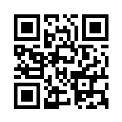
FGMXV01.80111.2L
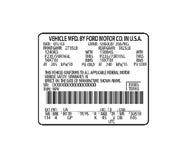
A tour of the I-CAR Chicago Technical Center, insight from industry experts and networking with body shops and vendors were all part of the two-day 1Collision Summit, June 8-9 in Chicago, IL. The 58 attendees included 1Collision location owners and managers, sponsoring vendor partners, and 1Collision staff from the U.S. and Canada.
“1Collision conferences have always been very well received by the 1Collision location owners,” said Jim Keller, president and COO of 1Collision. “During the pandemic, we were only able to connect virtually with the shops and vendor partners as a group. We are grateful for the partners and speakers that supported the event with their very informative and relevant presentations.”
On day one of the event, there was a behind-the-scenes tour of the I-CAR Chicago Technical Center, which opened nearly a year ago. Attendees had the opportunity to see the latest collision repair technologies and education.
“The Day at I-CAR event was a dynamic and valuable experience for all in attendance,” said Keller. “Special thanks to Bud Center, Lisa Ferguson and the entire I-CAR and Chicago Technical Center leadership and staff for a memorable experience.”
“We’re proud to aid 1Collision in their collective objective. The Appleton and Chicago Technical Centers are investments in our industry’s technical infrastructure,” said Associate Vice President of Collision Repair Terry Ticel. “With advanced technology impacting all corners of the industry, I-CAR’s role is to support every collision repair professional so that they’re armed with the resources, knowledge and skills to survive and thrive the Technical Tsunami™.”
Following a technical presentation from Center, I-CAR’s director of technical products and curriculum development, Brandon Eckenrode, executive director of the Collision Repair Education Foundation (CREF), discussed CREF’s efforts to support collision school programs and showcased how businesses can get involved with local schools.
Ideas included volunteering on advisory boards, encouraging students, schools and instructors to take advantage of CREF scholarships and tool grants and sponsoring Cintas uniforms for students. He also urged shops to donate parts to schools through CREF, participate in
career fairs, present to schools and host field trips.
“Collision industry businesses engaging with their local schools, students and instructors is crucial to help ensure these classrooms are full but also are graduating properly trained entry-level staff for industry employment,” said Eckenrode.

Hopkins, MN, and Collision Center 1 in Golden Valley and Prior Lake, MN, received the Growth Award.
The Community Involvement award was given to Denisse Barragan, J & R Auto Body & Paint in California, and Steve Fishe from Plan B Auto Body received an award for Most Improved Shop.
MSOs increase gross profit on parts and improve the parts procurement process. Adler shared tips with conference attendees on how to increase gross profit with the parts procurement process. He also discussed the results from 1Collision’s pilot program and how locations have improved their bottom-line.
Bob Stansfield, senior manager, field operations, Collision Repair Network (CRN) for OEConnection (OEC), discussed the importance of ensuring quality and safety and the significance of OEM certification in the collision repair industry.
“It indicates that a repair facility meets certain standards and has the necessary equipment, tools and training to repair vehicles properly,” he noted.
Greg Peeters, CEO of Car ADAS Solutions, and Frank Terlep, vice president of collision and ADAS services at Opus IVS, then shared information about setting up and operating calibration centers.
Peeters talked about overcoming the hurdles of building a thriving ADAS calibration business. “With new vehicles now required to have a calibration post-collision repair, is it critical for collision repair facilities across the country to decide how they will meet this increasing demand,” said Peeters. During his presentation, Peeters addressed the current and future need to conduct ADAS calibrations and shared the requirements to set up an OEMcentric calibration center.
Terlep discussed what Opus IVS is doing to enable ADAS service, calibration and validation businesses to open, operate and succeed.
“Today, no company is able to provide an existing or future ADAS service, calibration and validation business a complete diagnostic tool, software and mobile app solution to properly identify, diagnose, calibrate, validate, document, manage and invoice for ADAS services, calibrations and validations,” said Terlep, who helped shops understand what will be required in the future.
During that evening’s dinner, 1Collision presented four awards to network body shop owners/managers.
Raffi Avetyan and Ellie Adri from All Magic Paint & Body in California were named Promoters of the Year for their help with recruiting new locations. Jerald Stiele and Jake Moser from Hopkins Auto Body 1 in
Keynote speaker Caleb Spitler, founder of Restio, then shared insight on avoiding burnout and the science of having more energy.
“Everyone wants to increase productivity, have lots of energy, feel good and take their organization to new heights, but last year the No. 1 reason people quit their jobs was due to burnout,” Spitler noted. “If we expect a high level of output from ourselves and our teams, we must become experts at restoring our physical and emotional well-being.”
The following day, 1Collision strategic partners presented on topical industry issues. Enterprise representatives Tristina Egloff, business solutions manager in the Enterprise Replacement & Leisure Division, and Andi Dachel, director of sales and business development at Entegral, were also available to answer questions about Entegral services.
Dan Risley, vice president of quality repair and market development for CCC Intelligent Solutions, talked about the future of CCC and technology.
“As Advanced Driver Assistance Systems (ADAS) continue to evolve and become more commonplace, industry trends are materializing surrounding scanning and calibrations,” said Risley.
Risley talked about the root causes of these emerging behaviors, how they can affect business, and solutions to help shops owners and manager better manage their collision repair facilities.
As the national account executive at PartsTrader, Mark Adler has been working at the company for 10 years, focused on helping shops/
OEC Director of Collision Sales Nicky Woerner provided an overview of current and future trends, including the inefficiencies and confusion they create for repairers. Woerner educated shops on what it takes to get to a predictable outcome and how OEC is committed to helping solve the complexity of repairs.
Keynote speaker Mike Jones, founder and president of Discover Leadership Training, finished the event with messages centered around leadership.
Jones encouraged attendees to get out of their comfort zone yet realize that failure must be an option. “The person who truly perseveres is the one who got up, dusted himself off and got into the game and went for it again,” he said.
“Meeting everyone at the summit, along with all the information, speakers and I-CAR tour, was very worthwhile,” said Greg Anderson from Crossroads Collision in Salina, KS.
“My team and I walked away with a new, invigorating drive to be the best we can be at what we do,” added Ernie De Loera from Collision Service Center in Schaumburg, IL.
Moser, who received the Growth Award, said going to the I-CAR facility was “awesome.”
“We were able to see what they are up to and learn about some of the new products they are working on,” he shared. “It was great to see that they were doing testing on aftermarket scanners to see if they could pass OEM standards, which would help the body shops a ton.”
Moser said he was able to learn from all the presenters who spoke. “Best of all, it was about the people meeting one another and learning from each other,” he said.



DCR Systems announced its Mentor, OH, location is becoming a Rivian Certified Collision Center.
“It’s really important for our company to stay on the cutting edge of new technology and developments and be prepared to repair electric vehicles (EVs) properly in the future,” said Michael Giarrizzo, president and CEO of DCR Systems. “Having OEM certifications such as Rivian’s will help us do that.”
“We are proud to be working with this forward-thinking EV company,” said Cheryl Boswell, DCR Systems’ corporate CFO and managing partner. “Rivian, like DCR, is focused on using technology to launch this industry forward and to improve the life of our mutual consumers.”
“Working with DCR Systems has been a pleasure since the moment we walked into their shop,” said Joey Amodei, Northeast regional manager for the Rivian Certified Collision Network. “Their industryleading processes and culture made them a no-brainer when considering them for Rivian’s Certified Collision Network. We look forward to the continued partnership with DCR Systems as we continue to grow in
the Ohio market.”
DCR Systems is a dealer-based turnkey collision repair model. In addition to opening its own calibration center, Calibration Connection, the company operates nine production cells in four states— Ohio, Massachusetts, New York and North Carolina.
keeping up with the vehicles OEMs are going to be releasing and the technology inside.”
DCR Systems approached Rivian in 2022 to discuss the certification process. After the auto manufacturer visited DCR Systems’ facility, they went through the application process together. Throughout the

supportive with the onboarding process and more importantly, open to feedback provided to make the process smoother for certifying shops in the future,” said Wynn. “DCR is ready to repair Rivian’s fleet of EVs.”
In May, Wynn and DCR Systems’ team members Carrie Hehr, production lead, and Bill Raikes, master tech, attended the first Rivian Summit in Bloomington, IL, which included a tour of the OEM’s manufacturing facility.
“It’s exciting to be part of the next generation of luxury EVs,” said Wynn. “This is going to be in the history books one day.”
Wynn said the team is focused on properly repairing all EVs by following OEM procedures.
“There is nothing more important than repairing customers’ vehicles correctly,” she said.
“Part of our business model is ensuring that vehicles are repaired according to the way the auto manufacturer intended following their procedures,” said Mandy Wynn, national training and support manager at DCR Systems. “We are very driven and part of that is
Volvo said June 27 it will adopt Tesla’s North American Charging Standard (NACS), opting to use the connector for its EVs, making Volvo the latest major automaker to do so.
Volvo will also gain access to 12,000 Tesla Supercharger locations across North America, just as Ford, General Motors and Rivian have by partnering with Tesla.
“As part of our journey to becoming fully electric by 2030, we want to make life with an electric car as easy as possible,” Volvo CEO Jim Rowan said. “Today, with this agreement, we’re taking a major step to remove this threshold for Volvo drivers in the United States, Canada and Mexico.”
Volvo said it also expects the 12,000 Supercharger access figure to increase “as Tesla continues to expand its Supercharger network in the
region.”
Volvo will also provide an adapter for current EV owners that “wish to continue charging in the Combined Charging System (CCS) of chargers.”
Tesla first opened its Supercharger Network to Ford, announced jointly in May by Tesla CEO Elon Musk and Ford CEO Jim Farley. Soon thereafter, General Motors made the decision to adopt NACS, with Rivian following. Aptera, a solar EV company, adopted NACS before any other automaker.
Volvo drivers will gain access to Tesla Superchargers “from the first half of 2024,” the company said. Ford, GM and Rivian have all stated their customers will be able to access the Supercharger Network in the spring.
Earlier June 27, the Society of Automotive Engineers (SAE) announced it will make the Tesla NACS connector a standard and plans to initiate an expedited process to get it to that point.
process, DCR Systems staff has worked closely with the Rivian team to ensure they have the required equipment and are properly trained. In addition to in-person education, Rivian has a dedicated portal with vehicle-specific training videos.
“Rivian has been extremely
For more information about the DCR System’s Licensing Model, visit www.dcrsystems.com/dcrsystems-business-model/in-housemodel/ or email Michael Giarrizzo at mgiarrizzo@dcrsystems.net.
Source: DCR Systems


 By John Yoswick Autobody News
By John Yoswick Autobody News
PartsTrader data indicates parts delays have eased over the past 12 months, the company reported in a recent webinar. Across all part types—OEM, non-OEM, used and reconditioned—the median delivery time has been steady across the past year at just above one day, according to Greg Horn, chief innovation officer for PartsTrader.
But if nine out of 10 parts needed for a job typically all arrive promptly, Horn said, it’s the outlier that tells more of the story.
per non-OEM part had been trending below OEM parts until the fourth quarter of last year, when the average price of the two types converged because non-OEM parts prices had increased faster (about 9.4%) than OEM since the end of 2021. The average OEM part in May was just $3 more than the average non-OEM part.
But Horn also noted those comparisons include all parts that the OEMs produce, including lower-cost parts such as clips and emblems that non-OEM parts manufacturers don’t offer.
So he ran the same data looking
last year. He pointed to the rapidly increasing number of EV models available, from fewer than 50 in 2021 to 125 or more this year, and more than 150 by 2026.
If you think about the owners of electric vehicles, if you look at the demographics, they are generally in cities, highly-populated areas. The density creates more likelihood of accidents as opposed to being in the countryside.”
PartsTrader data shows the average price per non-OEM part had been trending below OEM parts until the fourth quarter of last year, when the average price of the two types converged because non-OEM parts prices had risen faster than OEM

“Averaging dilutes the impact of that one part out of 10 that is significantly delayed,” he said. “By looking at the median plus two standard deviations, you capture 95% of the population.”
That number stood at 11.9 days in May, according to PartsTrader data, Horn said. That’s down significantly from 13.3 days in January, and from 14.7 days in mid-2022—even if it remains higher than the 7.4 days in the first quarter of 2021.
“It’s a good sign that we’re returning toward more on-time deliveries, fewer back-ordered parts,” Horn said.
Horn also shared some PartsTrader data on parts price inflation. The average cost per recycled part in May was $325, up 6.2% from the end of 2022, and up 12.8% from the average ($288) at the end of 2021.
Interestingly, the rise in new OEM parts and non-OEM parts has been significantly lower—and by one measure, the average price of the two types of parts is virtually identical. The average price per new OEM part in May ($189) was up just 3.2% from the end of 2021. The average price
only at top volume parts—bumpers, doors, fenders, lamps and hoods— often available in both OEM and non-OEM versions. That comparison shows both a significantly larger difference in average part price between OEM ($534 as of May) and non-OEM ($316), and more of a difference in parts price inflation between the two.
The average price for those highvolume OEM parts is up 16.8% since the end of 2020, including increases in 2021 (4.8%), 2022 (7.7%) and in the first five months of this year (3.5%). By comparison, the average of those types of non-OEM part price rose sharply (25%) from the end of 2020 until the end of 2022— but has remained basically flat this year.
Industry consultant Terry Fortner, who participated in the webinar with Horn, said that change is likely due to increased cargo costs to import non-OEM parts during the worst of the supply chain issues, which have eased more recently.
Turning to the topic of EVs, Horn said EVs accounted for 7% of new car sales in the first quarter of this year, up from 4.6% during the same period
“Mercedes-Benz alone launched seven new models of full EVs,” Horn said. “You see price reductions from Tesla. You see more and more vehicle types. So now the share of EVs in the U.S. car [fleet] is 3.69 million. That’s roughly about 1%.”
By 2030, EVs are expected to account for 28% of new car sales, and 8% of the U.S. vehicle population.
A 2022 study by European insurer AXA found EVs in that market are involved in 50% more traffic accidents than internal combustion passenger vehicles.
“But think about how fast EVs are,” Fortner said on the webinar. “If you own a Tesla or have driven one, they are rocket ships. And
Horn said the weight of EVs is likely to cause more damage than lighter vehicles in crashes. While the average passenger car is about 3,700 pounds, he said, the Ford Mustang Mach-E, Hyundai IONIQ 5 and Tesla Model 3 are more than 4,600 pounds, the Rivian R1T is 7,148 pounds, and the Hummer EV is more than 9,000 pounds.
“That’s quite a fulcrum when it hits another car,” Horn said.
He also shared photos found on social media of what appears to be a light hit involving a Toyota rearending a Rivian R1T.
“It looks like it was just an impacted rear bumper,” Horn said. “But [the owner] took it to a certified Rivian shop—you can see a full teardown here, including removing the entire bed—and they came up with $42,000. The initial estimate that was done with photo-based estimating… was $1,600. The insurance triaging seems to have missed the mark by a bit.”
“It’s a good sign that we’re returning toward more on-time deliveries, fewer backordered parts.”
GREG HORN CHIEF INNOVATION OFFICER FOR PARTSTRADER
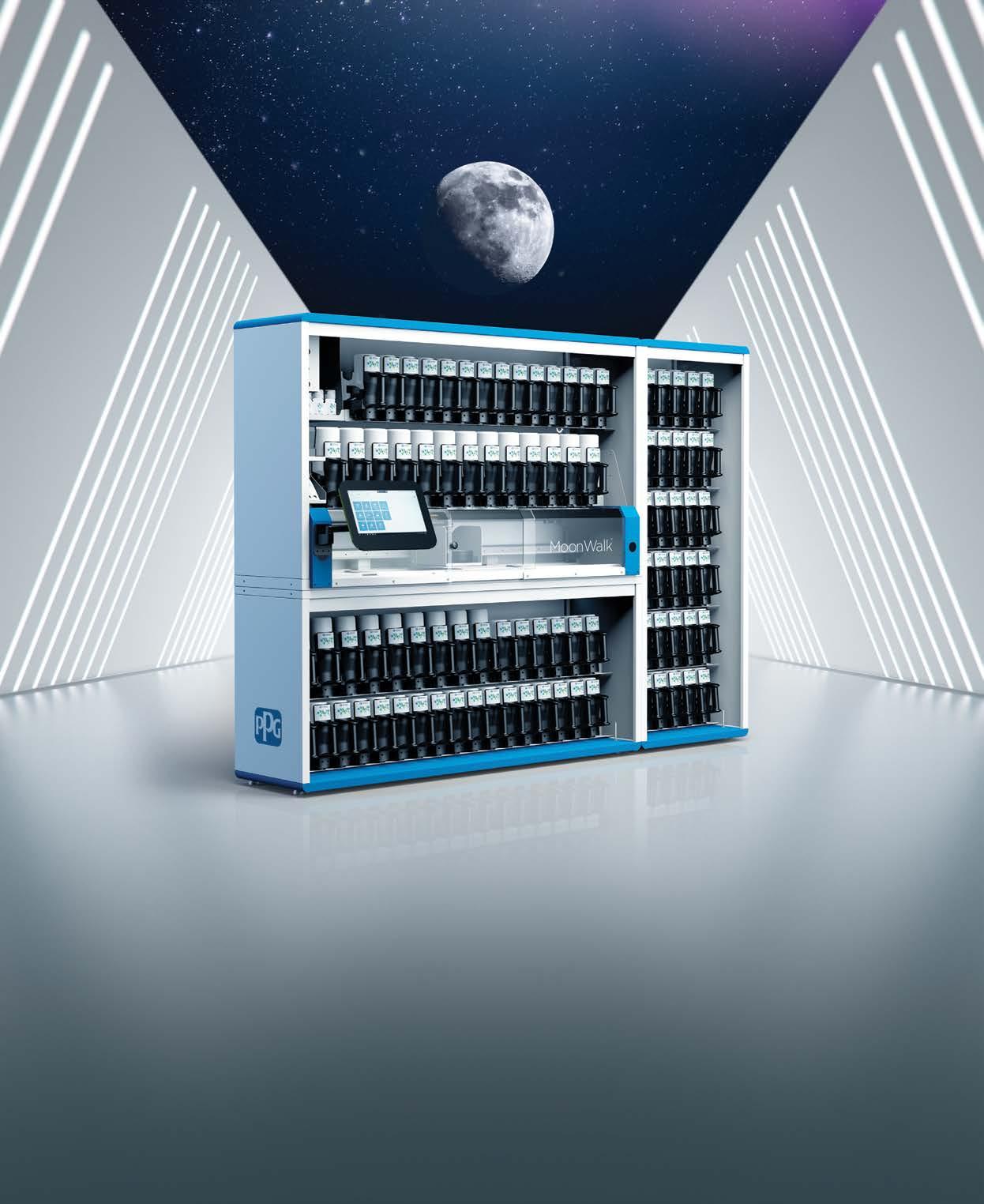




Northwood University in Midland, MI, has named Dr. Thomas Litzinger, an accomplished high-performing executive with more than 30 years of aftermarket industry experience, its new industry chair of aftermarket education.
“Dr. Thomas Litzinger has already made an impressive impact as executive director of the University of the Aftermarket and in the classroom. With Thomas now leading our academic aftermarket program, Northwood looks forward to further gains in serving the emerging talent needs of this important sector of our economy,” said Dr. Kristin Stehouwer, academic vice president and provost of Northwood University.
As Northwood’s executive director of aftermarket education and industry chair, Litzinger will provide strategic leadership for the full range of aftermarket education, from professional development and training to bachelor’s and master’s degrees.
“Thomas is a thought leader who tirelessly strives to improve the aftermarket industry by helping individuals and organizations reach
their full potential,” Stehouwer added.
“The global aftermarket trends and associated challenges are rapidly evolving,” Litzinger said. “Challenges with electrification, right to repair, cybersecurity and sustainability, to name a few, are at the forefront of aftermarket organizations. In this combined role leading the University of the Aftermarket and the aftermarket academic program, I look forward to helping these organizations proactively respond to new trends. On campus, the focus will be developing free-enterprise leaders in the aftermarket industry who drive global economic and social progress through immersive learning to advance economic freedom for everyone, everywhere.”
Litzinger has an extreme passion for Northwood and the aftermarket industry. He earned his bachelor’s degree in business administration at Northwood and his master’s degree in organizational leadership from the DeVos Graduate School of Management. He also completed
Leadership 2.0, an executive training program through the University of Aftermarket. Outside of Northwood, he completed his doctorate at Liberty University and is a limited licensed psychologist in Michigan.
Litzinger was named executive director of the University of the Aftermarket in October 2022.
Housed at Northwood University, the University of the Aftermarket offers online university-level classes on various business topics. These are the same classes offered to Northwood University undergraduate students and are taught by Northwood faculty. It is a convenient way for professionals to improve their skills while earning continuing education credits toward their Automotive Aftermarket Professional (AAP), Master Automotive Aftermarket Professional (MAAP) or Automotive Content Professional (ACP) professional designation.
Northwood University has a close relationship with the automotive aftermarket industry. In addition to overseeing undergraduate aftermarket education at Northwood, Litzinger will continue to lead the University of the Aftermarket, providing industry-specific professional development to those working there.
For more information about the University of the Aftermarket, visit admissions.northwood.edu/ corporate/uofa. To learn more about Northwood’s Automotive Aftermarket Management Program, visit www.northwood. edu/academics/automotiveaftermarket-management.
Source: University of the Aftermarket



“Thomas is a thought leader who tirelessly strives to improve the aftermarket industry by helping individuals and organizations reach their full potential,”
DR. KRISTIN STEHOUWER ACADEMIC VICE PRESIDENT AND PROVOST OF NORTHWOOD UNIVERSITY.






With this year’s legislative session wrapping up in many states, here’s a round-up of some the new laws impacting the collision repair industry.

fail to agree on the amount of a loss.
Rhode Island lawmakers also passed a bill (H 6027) requiring insurers covering a claim in which the insured’s vehicle is a total loss to extend rental car coverage for an additional week after the insured receives the total loss payout. That law became effective without the governor’s signature.
Texas
Gov. Greg Abbott signed into law legislation (HB 3297) eliminating that state’s vehicle safety inspections for non-commercial vehicles as of Jan. 1, 2025.
to which an automobile insurance company controls or influences repair work done” for customers at body shops, and the impact of direct repair programs on both shops and consumers.
Florida
those repairing or replacing glass on a vehicle equipped with ADAS to inform the customer if a recalibration is required and has been performed to meet OEM specifications.
Virginia
Rhode Island
Gov. Daniel McKee signed into law legislation (S 925) making it an unfair claims practice for an insurer to refuse to compensate a shop for “documented procedures identified as necessary by the original equipment manufacturer [or] paint manufacturer… when requested by the repairer.”
The new law also limits what insurers can negotiate if they fail to meet the existing state requirement to perform supplemental reviews within four business days after requested by a body shop, and adds an appraisal provision into state law, spelling out the process if a consumer and insurer
Vermont
Just prior to the close of the legislative session, an amendment tacked onto a 122-page otherwise-unrelated bill (S 95) calls for the state’s commissioner of financial regulation to conduct a study of collision repair labor rates, “the use of aftermarket parts, [and] market conditions,” making a report of findings and recommendations” by November 2024.
The bill, signed into law May 31 by Gov. Phil Scott, said the study should look at labor rates in surrounding states as well, and determine whether Vermont should establish a minimum labor rate. It is to examine “the extent
Gov. Ron DeSantis in June signed into law a bill (SB 7052) that gives state regulators there greater authority to investigate insurance companies and levy heavier fines for misconduct. He also signed into law a bill (SB 1002) that prohibits a policyholder from entering into an assignment of proceeds agreement for an auto glass claim under a policy issued after July 1.
Oregon
Lawmakers passed a bill (SB 256) that prohibits the manufacture, sale or installation of any counterfeit supplemental restraint system, or the installation of any part or device that prevents a vehicle from failing to warn the driver that the airbag system is not functional.


Maryland
Gov. Wes Moore signed into law legislation (HB 920) that prohibits an insurer from steering a glass claim to a particular vendor, and requires
Carrying auto insurance is no longer optional in Virginia under legislation (SB 951) signed into law by Gov. Glenn Youngkin; drivers previously could pay a $500 fee to register a vehicle without insurance, but that option is now repealed.
Maine
Both chambers of the legislature passed a bill (LD 1661) that mandates that liability insurance policies cover the costs of towing and storage of certain vehicles.
Minnesota, Arkansas and New Mexico
Minnesota Gov. Tim Walz signed into law legislation (HF 30) increasing the record-keeping requirements for scrap metal dealers purchasing a detached catalytic converter. Similarly, Arkansas Gov. Sarah Huckabee Sanders signed into law an Arkansas bill (HB 1365) aimed at curbing catalytic converter theft, as did New Mexico Gov. Michelle Lujan Grisham (SB 133).
In my July 2023 column, I shared part of a conversation I had with one of my teammates at Collision Advice, Sheryl Driggers, about what she sees it takes to create an extraordinary customer experience at your auto body shop.
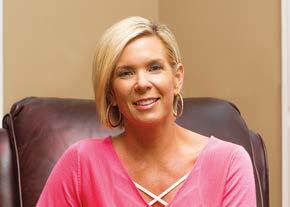
The customer experience is about more than just “customer service.” Those are individual moments, but are only part of the customer’s overall experience of interacting with your brand start to finish, not just during the time spent interacting with your employees. Our conversation was based on our belief that customers won’t really notice a “normal” experience with your shop, only an “extraordinary” one. Here’s more of what Sheryl and I discussed.
Mike: What else should go on during that conversation?
Sheryl: Talk to the customer about being their advocate throughout the claims and repair process. Give them a designated person to be able to contact. At our shops, we designated a person who was the contact for each customer, the one responsible for contacting that customer every other business day. The customer had that person’s email address and cell phone numbers so they could call or text if they had questions in between those updates.
Another one of the most important things that I think that shops often do not communicate clearly is the value of their shop’s warranty. Early on, talk about what that warranty includes, what that means for the customer. Often you hear insurance companies talk customers into going to their preferred network or their DRP shop because of the warranty. So it’s important that shops talk about their warranty early on, and explain even in that first in-person repair consultation what it means to the customer.
Mike: Sheryl, we talked previously about what goes into creating an extraordinary customer experience prior to them even arriving at the shop. Now let’s talk more about what else needs to happen prior to repairs.
Sheryl: Sure. So once we have the customer in front of us, in our office, how do we communicate the value of choosing our shop? No one likes to go somewhere and be “sold.” No one wants that pushy, aggressive salesperson just trying to sell them something. So I always say: We don’t have to sell; we just have to communicate the value of our shop to customers.
As I’d mentioned, talk about the shop certifications you have, and why that certification matters to them. Show not just that you have advanced training and equipment to repair the vehicle back to when it was when it was manufactured, but also explain how that helps maintain the vehicle warranty.
Mike: So after that is it just about fixing the car correctly?
Sheryl: No, there’s more to it. We want to treat customers as if they are our VIPs, so when we give them that extraordinary experience, they then become brand evangelists. Sure, you have to fix the car the way that the manufacturer says it should to be fixed, using the repair guidelines from the manufacturer. But you’re supposed to do that. So that’s average. That’s normal.
You have to look for opportunities to be extraordinary. You have to look for opportunities to be generous with your customers, to do things that they do not expect. Maybe the customer’s car has a scratch on the other side of the vehicle that you are able to buff out. When you are generous with the customer, you help create an extraordinary experience.
Mike: What else do you see going into that process?
Sheryl: Well, one of the most important things that we can do with that customer during repair is always overcommunicate. Mike, you wrote a column once citing that quote from author Jon Gordon who said, “Where there is a void in communication, negativity will fill it.” So communicate to avoid those voids, even from the beginning, through the disassembly phase, through writing a complete repair plan. Keep the customer informed on what is going on. Even if you’re waiting for someone else—maybe on the bill payer to approve a supplement—make sure that the customer is in the loop during the entire process.
And you have to be responsive. We have to respond to the customer quicker than they expect. One of the things we asked our customer service team at our shops to do was to always have the customer updates done before 10 a.m. Because if a customer is expecting a phone call from you today, if they don’t hear from you before lunch, they’ll automatically assume you’re not going to call. So it’s important to always respond quicker than they expect.
Mike: So does that bring us to the vehicle delivery process after repairs?
Sheryl: That’s right. We’ve got to finish strong. And so one of the things that we did was we set up delivery appointments in order to make sure we were prepared and had the time we needed to spend with that customer. The first thing that we did at the delivery
appointment was review the repairs with the customer at the car. We were proud of the work that we did. We weren’t trying to hide anything. So we reviewed the repairs with the customer, while at the same time talked again about the warranty. We talked about the CSI survey that they’d be receiving in a couple of days, stressing that we value their feedback. And then after all of that is done, that is at the point where we will collect any kind of payment or insurance check that we needed from the customer.
Mike: Is there more about the payment process that can help create an extraordinary customer experience?


Sheryl: Yes, we would send the customer the final bill electronically, and offer them the option to pay electronically if they wanted. We could send them a link before they even showed up at the shop for the delivery appointment to take care of that, if they wanted. Some people want to do everything on paper, while others want to do everything electronically. So giving customers options is important.
Mike: Sheryl, I can’t thank you enough for sharing your expertise with me on creating an extraordinary customer experience—so that I can share it with the readers of my column. I’m proud to work with you.
So, readers, what goes into creating an out-of-the-ordinary experience for the customers at your shop? I’d really love to hear your ideas. Shoot me an email at mike@ collisionadvice.com!


“I am so excited that SATA by Dan-Am has teamed with me to introduce the very first paint suit for women. The Girls Behind The Gun paint suit is made to fit the ladies who work hard in this industry...No more tape ladies” ~ Connie Manjavinos
Protective hood
Full poly-cotton back for increased breathability








Machine washable. Made from 100% polyester calendered materials with antistatic built-in carbon fiber threads to dissipate electronic charges. Breathable full poly-cotton back.
INNOVATIVE PATENTED Drop seat for complete ease of movement Helps prevent ripping at crotch


 Back elastic for better fit
Two utility back pockets
Built-in padded knees for comfort and protection
Heavy duty zipper with corded covering
Hook and loop cuff closures enable you to wear your glove under or over the sleeve to protect your skin.
Ergonomically shaped sleeve for easy movement
Easy to slip on wide pant legs
Adjustable hook & loop leg closure.
Back elastic for better fit
Two utility back pockets
Built-in padded knees for comfort and protection
Heavy duty zipper with corded covering
Hook and loop cuff closures enable you to wear your glove under or over the sleeve to protect your skin.
Ergonomically shaped sleeve for easy movement
Easy to slip on wide pant legs
Adjustable hook & loop leg closure.
Michigan small businesses devastated by state COVID lockdown restrictions can apply to tap a one-time $75 million fund from federal taxpayers.

In February, the Michigan legislature passed into law the $75 million Small Business Smart Zones and Business Accelerators initiative. The fund is a one-time appropriation using American Rescue Plan Act funds to support small businesses disproportionately impacted by COVID-19.
Gov. Gretchen Whitmer joined the Michigan Economic Development Corporation to announce the new program. In Michigan, small business growth has surged with 137,000 new small business applications submitted in 2022, partly caused by a flood of businesses permanently closing during the pandemic.
“Ensuring our small businesses are positioned to grow and create good jobs across Michigan is critical as we continue to grow
Michigan’s economy and build a brighter future for our residents,” Whitmer said in a statement.
“Thriving small businesses are vital to our state’s economy, and these federal funds will provide economically disadvantaged entrepreneurs and small businesses with timely financing to build up their business, create jobs for their friends and neighbors and support their community’s vibrancy along the way.” During COVID, Whitmer shuttered some industries, including movie theaters, bowling alleys and gyms, for more than five months.
Small Business Support Hubs will bring resources to small businesses by funding entrepreneurial hubs for operations, programming and direct support to small businesses. The program will provide up to $6 million to entrepreneurial hubs to invest in regional operations and deployment support services, as well as direct grant support to small businesses that were disproportionately impacted by COVID-19.
The goals of the program are to:
Cultivate a more inclusive, accessible and integrated tech and small business entrepreneurial ecosystem.

Increase the number of businesses served through new programming, technical assistance and support services.


Expand the geographic reach of network partners into underserved communities and rural areas.
Eligible applicants have physical spaces that provide entrepreneurs with resources including oneon-one coaching, consultations, workshops, seminars, incubation activities and networking and mentorship opportunities and events.
The Michigan Strategic Fund will select grantees through an open and competitive application process. Applications will be accepted from July 10 to Sept. 8. Information will be provided to all parties via a webinar on from 9:30–10:30 a.m. EST July 11.
The Michigan Strategic Fund also approved the new Michigan Innovate Capital Fund Program, to award incentives to nonprofit organizations that operate fund
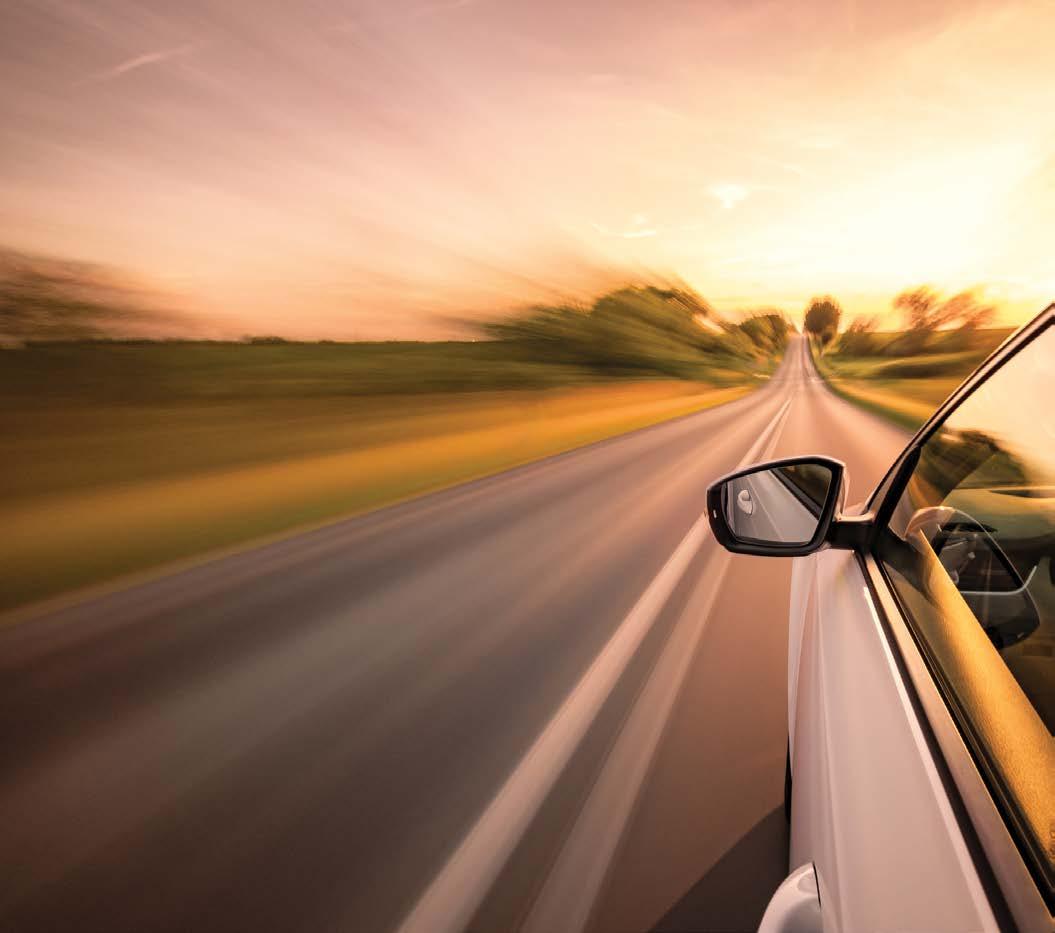
programs to invest in pre-seed and startup stage competitive edge technologies that require capital in the earliest stages of the commercialization process. To qualify, organizations must demonstrate an ability and willingness to invest in high-growth technology-based companies that are primarily in the earliest stages of commercialization.
Nonprofits that have previously received financial support from MSF or MEDC are eligible to apply; those that have not received previous funding from MSF or MEDC but deploy capital exclusively in Michigan and can demonstrate how they will use funding to create jobs and drive sustained, long-term growth are also eligible. Preference will be given to nonprofits based in underserved locations that address the funding gap in underrepresented industries.
The program received a $23 million allocation from the Jobs for Michigan investment fund and awards of up to $5 million will be made to qualifying organizations.
ULTRA FLEXIBLE
Available in 3”, 5”, 6” Discs & Sheets
K-240 to K-1500
FLEXIBLE BONDING results in Extremely Shallow Scratches
ULTRASHARP ABRASIVES results in Faster Cutting


ANTI-CLOGGING AGENT results in a Total DRY Application

IT’S LIKE YOUR
IT’S LIKE YOUR
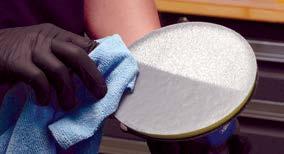

FAST, UNIFORM COVERAGE

Super Buflex is a revolutionary polish sanding system that works completely dry and delivers a more uniform finish while cutting faster. Leave the prep and mess of compound buffing behind and... reduce your buffing times by 50% or more!
ANTI-CLOGGING TECH
Available in 3”, 5”, 6” Discs & Sheets

K-2000 to K-3000
TOLECUT Touch-Up System utilizes many of the same technologies to quickly eliminate nibs and runs after paint.

K-800 to K-3000
Super Buflex
EXTREMELY UNIFORM
CONVENTIONAL

South Hall Upper
Booth 33131
The original award-winning flexible sheet & disc sanding system that cuts fast while delivering a shallow and uniform finish. Perfect for scuffing, blending, topcoat sanding and more... By

Super Buflex Interface Pads VisitEagle@SEMA2023toexperienceforyourself



SCAN TO LEARN MORE
www.EagleAbrasives.com

last because it anticipates changes in automotive technologies and market evolutions.”
The signers of the pact said the agreement addresses independent repair facilities’ access to diagnostic and repair information, including telematics data needed to diagnose and repair a vehicle if not otherwise available, for all vehicle technologies and powertrains, including gasoline, diesel, fuel cell, electric battery, hybrid and plug-in hybrid electric powertrains.
The pact also includes a pledge to work together on education and training programs so independent repairers know where and how to obtain repair information, and a forum to discuss future repairer needs as they develop with emerging technologies.
In a press release announcing the pact, SCRS said, “As state legislatures and Congress consider automotive right to repair laws, including the REPAIR Act, the parties noted: ‘…independent repairers and automakers are not at odds on automotive data access, but rather in lockstep on this fundamental principle: consumers should have
choice when it comes to repair options and the ability to have their vehicle serviced in well-equipped shops by well-trained technicians anytime, anywhere, anyplace.’”
OEMs only agree to give access if the data “is not otherwise available” through the OBDII port, meaning a shop could be forced to subscribe to multiple third-party tools to get access; and it fails to address the safety and security of the wirelessly transmitted vehicle data.
The REPAIR Act is a comprehensive and critical piece of federal legislation that preserves competition, affordability, accessibility and a vibrant supply chain, ACA said.
that yields the highest quality safety outcomes at a fair price for drivers.”
However, in its own press release objecting to the pact, ACA said the agreement is not only designed to create confusion, but also has numerous flaws, including the fact it is non-binding and there is no way to force OEM participation or compliance; it does not cover all automakers (e.g. Tesla) and there is no requirement for new OEMs to join; it does not obligate OEMs to provide direct access to telematically generated repair and maintenance data—rather the OEMs have agreed to make data available through OEM controlled systems and tools; the
“ASA has been a steadfast advocate for the right of independent repair shops to vehicle service information since before the 2002 service information agreement it signed with automakers,” said Scott Benevidez, ASA Board chairman and owner of Mr. B’s Paint & Body Shop Inc. in Albuquerque, NM. “Since then, the cars Americans rely on have become increasingly sophisticated, and the rate of innovation will only accelerate. The way vehicle issues are diagnosed and repaired evolves in tandem with advancement.
“ASA is proud to have reached this new agreement with automakers because it ensures ASA members can diagnose and repair their customers’ vehicles without hinderance from telematics nor any other innovation,” Benevidez said. “Most importantly, it maintains a competitive repair market

“While it is welcome news that the auto manufacturing industry acknowledges that ‘consumers deserve access to safe and proper repairs throughout a vehicle’s lifecycle,’ today’s letter... is nothing more than lip service and regurgitated platitudes,” said CAR Coalition Executive Director Justin Rzepka. “This pact masquerades as pro-consumer but, in reality, does nothing to expand consumer choices and give a vehicle owner access to repair data.
“Any new agreement touted in the letter is entirely unenforceable and nothing more than window dressing,” Rzepka continued. “This letter and agreement should be seen for what they really are---an attempt to prevent Congress from advancing consumerfocused legislation like the SMART and REPAIR Acts that would break the monopoly on auto parts and protect consumers’ rights to repair options and data access. The CAR Coalition remains committed to pursuing these bipartisan bills in order to put consumers, not auto manufacturers, in the driver’s seat when it comes to vehicle repair.”
“ASA has been a steadfast advocate for the right of independent repair shops to vehicle service information since before the 2002 service information agreement it signed with automakers,”
SCOTT BENEVIDEZ
ASA BOARD CHAIRMAN AND OWNEROF
MR. B’S PAINT & BODY SHOP INC
EXPERTISE. EXPERIENCE. EXCELLENCE.
For more than 25 years Axalta has sponsored and facilitated Business Councils to help our customers elevate their business performance by creating a network of industry peers and offer the opportunity to learn, share and hear from industry leaders. Axalta leads the way in giving you the tools and information you need to be successful.
• Share best practices within the collision repair industry
• Opportunity to work “on your business” versus “in your business.”
• Network with other shops for assistance with your challenges
• Access to the latest industry tools and resources
• Greater industry networking opportunities
AREAS OF FOCUS
• Industry Trends
• Peer-to-Peer Networking
• Financial Benchmarking
• Marketing
• Operational Best Practices
Meetings will be held semi-annually (April and October) on a Thursday and Friday and will consist of individual group breakout sessions along with general sessions. Individual sessions will be led by key Axalta Employees and will provide content tailored around the group’s business needs. There will also be industry specific walk around presenters. General Sessions allow for networking opportunities and will include a National Speaker presentation.
If you are interested in joining the Axalta Business Councils, please reach out to your Strategic Account Manager or contact namarketing@axalta.com and request an application today!






















































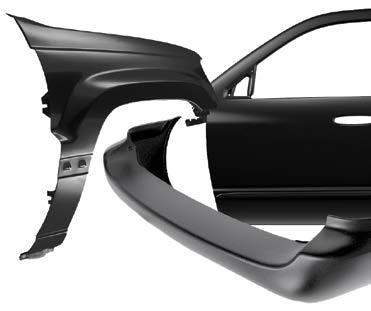














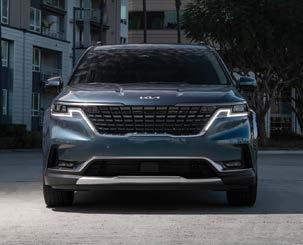
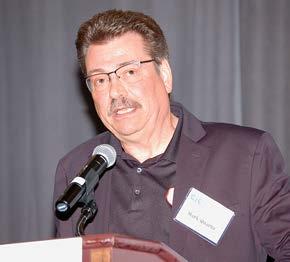 By John Yoswick Autobody News
By John Yoswick Autobody News
Back in 2019, when Jeff Peevy was chairman of the Collision Industry Conference (CIC), he started placing an empty chair on the stage as a reminder to attendees of an important industry constituent not generally represented at the meetings: the consumer.

“Those families who ride in the cars that our industry repairs should be at the forefront of our thoughts,” Peevy said at one CIC meeting that year.
Now the vice president of technical products, programs and services for I-CAR, Peevy said the lack of interest he sees in getting technicians trained to work on electric vehicles (EVs) has him concerned for more than just consumers.
“I see our industry standing on the tracks looking at a freight train coming full speed at us, and we’re just staring at the light,” Peevy said
reason that even the country’s largest multi-shop operation is taking a conservative approach to gearing up for EV repair. Jeff Brewer, director of EV strategies and OEM certifications for Caliber Collision, said as of this spring, just 21 of the company’s more than 1,700 locations were specifically trained and equipped for EV repair.
“Of those, there’s a few that that’s all they work on,” Brewer said at CIC. “We’re still drinking from the fire hose. We started two years ago and there’s still much we don’t know. It’s really evolving. We have a lot of strategic partners—fleet accounts, insurance accounts or OEM accounts—that would like to see us tool up quicker. We just can’t. We’re taking a very conservative slow approach to it, first and foremost focused on employee safety.”
Space is another consideration, he said. Go to your shop’s back lot, he suggested, and map out the 50 feet of space you’ll need around an EV towed in with significant damage that needs to be quarantined.
“But at the end of the day, it is manageable, it is doable,” Brewer said. “And we don’t really have a choice. I will tell you, when you get to the point—and I imagine a lot of you are already there—that you hang a sign up that says you’re EVready, get ready, because you will be swamped. It’s less than 20% of the industry that’s really proactively going after this, creating the solutions.”
echoed by another speaker at CIC, Mark Quarto of Quarto Technical Services. Earlier in his career, Quarto spent 28 years with General Motors developing propulsion and battery pack systems. He said particularly
a scope can be used to detect lithium-ion battery off-gassing that cannot be seen with the naked eye in addition to ongoing temperature scans to determine if there is an upward trend. A four-gas meter should also be used within 4 feet of the EV to detect carbon monoxide and hydrogen.
Zartman said fire codes “are never going to catch up with how fast this industry is evolving,” so shops may not be able to get a lot of helpful guidance from fire marshals about how to set up space for EV repair or storage. Insurance underwriters may be a better resource, he suggested.
from the floor of CIC this spring. “When we look at the number of those in the industry—regardless of whether it’s repairers or insurers— who have expressed any interest in educating themselves on EVs, it’s shameful, to be honest with you. I think we’re going to need to put another chair up there [on the CIC stage] to represent those who are involved in the repair of electric vehicles, because I’m not sure the technicians and those laying hands on the vehicles have any idea of the danger they are being put in.
“My question is: How many shops are going to turn an EV away when they see it as a job they can do? Yet they may have no idea what they are getting into. I think as an industry we need to search our soul, and become honest about getting educated.”
Employee safety was cited as a key
He said with past vehicle technologies, the industry had the luxury of a slow roll-out, a tendency to “fake it until you make it.” He pointed to vehicle scanning as an example of a technology the industry was able to adapt to over time. EV repair is not like that, he said.
“This is not a technology that we can slow roll,” he said. “Our company has decided this is not a situation where we can just teach the average collision repair technician another trick.”
Like it or not, he said, EV repair requires a collision repair business “to very quickly be in the mechanical business.” He said this is particularly true for those working with new EV entrant automakers, such as Rivian and Lucid, which require certified body shops to be “full service” in terms of both body and mechanical repair.
“Eighty percent of the industry still doesn’t get that,” Brewer said.
That need for expansion beyond traditional body and paint work was
with electric vehicles, collision repair businesses will need a thorough intake system that includes looking at more than basic scans and diagnostic trouble codes.
“That data is good, but there are some situations which there won’t be a trouble code but there’s going to be something that’s nearing failure,” Quarto said at CIC. “Sometimes knitting some of the data together helps someone to know how close something is to a failure. So knowing what data to look at, how
“I would encourage you to look at the spaces where you are operating on the vehicles and have really strong protocols for rapid removal of vehicles,” he said. “If a vehicle starts going through a thermal runaway, have a practiced, planned process in place about how you protect your personnel, and how to remove the fuel source from the building.”
He also recommended making wherever EV batteries are stored “very fire resistant” and isolated from the rest of a shop’s structures.
“Because the reality of every sprinkler system on the planet is it’s going to be designed to protect the building but it is not going to put out a battery fire if you have one and have multiple battery packs in a space,” Zartman said. “You will lose all the contents of that room.”
to look at it, and how to knit some of that together can be helpful. I know in the collision industry, the high voltage electrical stuff especially has not been in the DNA. But it’s going to have to be. You’re going to have to evolve into it.”
Dalan Zartman of the Energy Security Agency said a single thermal image scan of an EV is often insufficient to determine if the battery pack is experiencing thermal runaway. There is often too much between the outer layer of the battery pack enclosure being scanned and the actual battery cells, he said.
A thermal imaging camera with
As at every CIC, the agenda included a variety of topics. During one panel discussion for example, a shop owner discussed seeing differences in what some insurance companies will pay for versus other companies. Ohio attorney Erica Eversman offered a caution about billing consistently no matter who is paying for the vehicle repairs.
“If you have a good company, so to speak, that pays, you want to keep that good company paying well,” Eversman said. “They need to see that you are always demanding the same thing no matter who the carrier is. Because they’re going to be looking at documents in subrogation,” and you don’t want them to see, “Oh, well, you charged us for this but you didn’t charge that other insurance carrier for that.”
Apply the same business and billing practices across all customers, irrespective of whether the job is self-paid or paid for by any insurer, Eversman suggested.
“My question is: How many shops are going to turn an EV away when they see it as a job they can do? Yet they may have no idea what they are getting into.”
JEFF PEEVY VICE PRESIDENT OF TECHNICAL PRODUCTS, PROGRAMS AND SERVICES FOR I-CAR







The Center Square
Kentucky landed yet another electric vehicle-related project when a Japanese company announced it would expand a plant in the central part of the state.
Hitachi Astemo Americas will invest $153 million in its Berea plant and create 167 new jobs, according to a release from Gov. Andy Beshear. The company is building a 752,000-square-foot expansion across 62 acres in Madison County.
Hitachi Astemo Americas President Tim Clark said the endeavor serves as “a bold step” toward the company’s commitment to supporting the development of EVs.
“Hitachi was founded on the basis of a pioneering spirit and being in harmony with society,” Clark said. “This next generation of automotive technology allows us to further that ambition, and we are proud to be able to do that in Berea.”
Berea is 40 miles south of Lexington and located along
this journey, Crash Champions has assembled some of the very best people in the industry, all committed to making a difference in the lives of our customers. I’d like to thank the judges, sponsors and the entire Entrepreneur Of The Year platform for supporting and showcasing the spirit of entrepreneurs across the country.”
As a visionary entrepreneur and leader, Ebert has grown Crash Champions from a single New Lenox, IL, auto body shop into the third-largest collision repair organization in the U.S., serving customers at more than 600 repair centers in 36 states.

“Every year, we are completely blown away by the accomplishments of our Entrepreneur Of The Year Regional Award winners, and 2023 is no different,” said AJ Jordan, Ernst & Young Americas Entrepreneur Of
Interstate 75, part of Auto Alley, the region of midwestern and southern states home to several major vehicle production facilities and their suppliers.
up to $2.4 million in tax credits based on the company meeting its investment and job goals over 10 years and the jobs paying Kentucky residents $25.71 an hour.
“Manufacturing and the automotive sector have long been staples of the commonwealth’s economy, and with the rapidly growing EV sector bringing quality jobs and investments to our communities, we are setting Kentucky up for sustained success,” Beshear said.
Berea Mayor Bruce Fraley said he and other city officials are delighted to see the city’s largest employer choose to expand there.
Besides Berea, Hitachi Astemo also has a plant in Harrodsburg and has been in the state for nearly 40 years. It employs more than 2,100 workers across the two sites.
The Kentucky Economic Development Finance Authority gave preliminary approval to an incentives package for the project in March. Hitachi can receive
The Year program director. “They are change-makers and champions of business and community, and we are so proud to be honoring them. We can’t wait to see how these leaders will continue to improve lives and disrupt industries.”
Entrepreneur Of The Year Midwest finalists were evaluated by an independent panel of judges on their demonstration of building longterm value through entrepreneurial spirit, purpose, growth and impact, among other core contributions and attributes. A total of 12 winners were selected to advance to the national ceremony.
Since 1986, the Entrepreneur Of The Year program has recognized more than 11,000 U.S. executives. Ebert’s selection as a Midwest winner comes after also being named the 2022 MSO Executive of the Year.
Source: Crash Champions
“The decision of a worldwide company to expand its Berea facility speaks well for their local employees, management team and the positive economic climate of Berea and Madison County,” Fraley said. “We value the longterm positive relationship with Hitachi and are very happy to see a long-term, existing employer continue to grow as our city grows.”
AkzoNobel is using advanced technologies to create step-change improvements in its North America industrial operations with the addition of a pilot manufacturing plant in Huron, OH, and a new regional research and development center in High Point, NC. The company is shaping the future through advanced technologies and delivering innovated solutions to customers. Huron’s new pilot plant is one in a network of pilot plants globally and supports AkzoNobel’s Packaging, Marine and Automotive businesses. The state of Ohio serves as AkzoNobel’s largest footprint in North America, with locations in Huron, Strongsville, Springfield and Columbus. The company’s community of North America R&D Centers supporting the Performance Coatings businesses includes—in addition to High Point— laboratories in Troy, MI, Strongsville, OH, Houston, TX, Flying Hills, PA, and Lancaster, SC. AkzoNobel’s R&D Centers are transforming the company’s investment in science and technology while giving customers direct access to sustainable product development.
Source: AkzoNobel
“The decision of a worldwide company to expand its Berea facility speaks well for their local employees, management team and the positive economic climate of Berea and Madison County,”
BRUCE FRALEY BEREA MAYOR
This is part one of a two-part series. Check out the September 2023 issue of Autobody News to read about more shops in the program.
Toby Chess recalls planning a collision repair training day for about 80 high school students in Hawthorne, CA, 25 years ago. Since then, he’s had a passion for training young people and bringing them into the collision industry.
OEM repair procedures and proper personal protective equipment. These include repair planning, corrosion protection, bumper repair, vehicle measuring and glue tab dent repair.
“We have to take steps to give back to the industry and address the technician shortage,” said Chess. “Otherwise, nothing will change.”
As a long-term instructor with I-CAR for more than 25 years, Chess reached out to the organization about the program. I-CAR is offering support to his endeavors and working with him to amplify his efforts.
common for body men to bring in relatives to the shop as helpers who eventually became technicians.
“Toby, having a good heart, suggested we hire some people, give them tools and train them,” recalled Nouri.

Nouri reached out to friends and relatives who knew of unemployed individuals and hired four as helpers to be mentored by his more experienced technicians.
“I gave each technician a helper and Toby gave them toolboxes and trained them,” said Nouri. “They are going to be body men within a year or two.”
Zamir has a close relationship with several local tech schools and is often asked to speak with students about the “real-world experience.”
“Because I invest so much in equipment and training and am personally knowledgeable in various aspects of the shop, I can take a student out of tech school and offer them a career,” he said. “This includes
About two years ago, he was visiting a body shop and a newer employee was asked by his supervisor to sweep floors and do menial tasks.
“I asked his supervisor why he didn’t buy him some tools so he could feel part of the team,” said Chess, who ultimately bought tools for the budding technician. “The expression on his face was unbelievable.”
Fast forward to the present and Chess said shops are in the same predicament as they were when it comes to hiring and retaining staff.
“We all need technicians,” said Chess. “We’ve been talking about that for years but what are shops doing about it?”
Chess stresses the importance of keeping young people engaged and setting a career path for them.
“It’s critical to find ways to motivate these young people and keep them engaged or they won’t stay,” said Chess, who embarked on a project to encourage independent shop owners to initiate mentorship programs.
Chess supplies a set of tools to the helper and asks shop owners to provide toolboxes. He also shares best practices documents he created that the mentor and mentee can follow to help standardize the repair and can be used in conjunction with


“I-CAR is proud to support the efforts of leaders in our industry, like Toby, who are making strides to foster a learning culture and growth mindset in our shops—particularly with new technicians,” said Dara Goroff, I-CAR’s vice president of planning and industry talent programming. “It’s an exciting time to be a professional in collision repair and we want to highlight the purpose new technicians find within it when they’re presented with opportunities that contribute to a complete, safe and quality repair for the safety of their customers.”
Six shops in Southern California shared information about the support Chess has provided with their mentorship programs, supplying tools to mentees and training. Here is what the first three shop owners had to say.
While working as a tow truck driver in the mid-1970s, Eddie Nouri admired how vehicles were repaired at the body shops he visited and eventually opened Anthony’s Body & Paint in Santa Monica, CA, in 1979. Since then, Nouri has purchased about 10 other shops, built them up and sold them.
Currently, he operates a facility in Inglewood in addition to his Santa Monica location. They have a total of about 50 employees and 10 OEM certifications.
As a result of the pandemic, Nouri found they were shorthanded.
He said 20 or 30 years ago, it was
He encourages other body shops to do the same and help develop the next generation of technicians.
Nouri has known Chess for many years and is appreciative of the training and assistance he has provided.
“I consider myself a successful and happy person and I owe Toby a lot of gratitude because he has taught me a lot,” said Nouri. “I noticed that every technician loves Toby and wants to improve themselves after working with him.”
ongoing training and immediate overthe-shoulder guidance while they’re doing the work.”
Zamir and Chess have been friends for many years. “He travels across the country to support shops that are willing to train their staff,” said Zamir. “He is a true friend of the industry, and like many true friends, he doesn’t seek nor get the appreciation he deserves.”
Scandinavian Coachcraft was established in 2001 by Ole Vandborg, who learned the trade in Europe as an apprentice and has lived in Los Angeles for 37 years. The collision repair facility focuses on quality repairs and has five structural certifications, Aston Martin, Lamborghini, McLaren, Mazda and Volvo.
To retain technicians and new talent, Vandborg recommends having upto-date equipment, and offering continual training and good pay.
Founded in 1989, Collision Consultants Auto Body & Paint Shop is owned by Sam Zamir and his partners. Over the years, the company has built a reputation as a high-end specialist, being among the first in Los Angeles to do aluminum repairs and work on electric vehicles (EVs) and new technology in cars. The business is certified by Maserati, MercedesBenz, Porsche and a few other manufacturers, and is I-CAR Gold Class.
“We take part in all of the I-CAR training available and our technicians are aluminum- and steel-certified welders,” said Vandborg. “The paint crew is certified as well and we send a couple of our employees to Europe every year for training.”
Over the years, Chess has done a lot of training at the facility, which has 30 employees. “They all know him and what he expects from them,” said Vandborg. “He has done a fabulous job moving an average tech to a super tech… he is a saint for all his dedication to the collision industry.”
“It’s critical to find ways to motivate these young people and keep them engaged or they won’t stay.”
TOBY CHESS
2017 to July 2020.
Conspirators submitted false claims that they had suffered bodily injuries and that they would be personally liable for any medical bills related to insurance claims. Conspirators, some of whom were involved in multiple incidents, received thousands of dollars, and in some cases tens of thousands of dollars, based on these false claims. However, none of the conspirators made any payments to medical providers and instead used the funds for their personal expenses.
Lawhorn was directly involved in two incidents in which he received separate payments of $1,500 and $17,350 from insurance companies. In several other incidents, Lawhorn sent emails to insurance companies, made telephone calls to insurance companies, directed others what to tell insurance companies, reviewed insurance policies prior to incidents, witnessed release agreements, and assumed the identity of parties to the incidents or people related to parties to these incidents in communication with insurance companies.
By pleading guilty, Lawhorn admitted to his involvement in nine automobile accidents in June and December 2017, in May and August 2018, and in January, February, August, October and December 2019 as part of the insurance fraud scheme that resulted in a total loss to his victims of $1.1 million. Most of the accidents were in Columbia and Kansas City, with one accident in St. Louis.
FBI agents seized Lawhorn’s iPhone and Apple Mac laptop when he was arrested in the insurance fraud case. A detective with the Boone County Cyber Crimes Task Force found evidence of additional fraud after searching those devices, which led to Lawhorn being indicted in the second case.
By pleading guilty in the second federal indictment, Lawhorn admitted that he fraudulently obtained three $10,000 COVID-19 economic relief loans for nonexistent businesses in his name and in the names of two other individuals as part of a fraud conspiracy. He also applied online for loans in the names of five more individuals, but those applications were rejected.
Under the CARES Act, the federal Economic Injury Disaster Loans (EIDL) provided loan assistance,



 By Kelcey Norris Mahoning Matters
By Kelcey Norris Mahoning Matters
Nick’s Auto Body celebrated a grand opening at its newest location, its first shop in Mahoning County, OH. This automotive repair shop’s employees are all ASE certified, specializing in repairing cars after collisions.
Chief Operating Officer Marcus Cook said they hope to gain the respect of everyone in Mahoning County as they continue carrying on the family-owned business.
According to its website, the shop is a National Auto Body Congress member and recognized as an Axalta Certified Repair Facility.
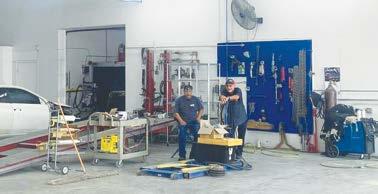
including $10,000 in advances for small businesses. EIDL proceeds could be used to pay fixed debts, payroll, accounts payable and other bills associated with small businesses that could have been paid had the pandemic not occurred. A business applying for EIDL relief was eligible for an advance of $1,000 per employee up to 10 employees that did not have to be repaid.
Under federal statutes, Lawhorn is subject to a sentence of up to 20 years in federal prison without parole on each of the three conspiracy charges, plus a mandatory consecutive sentence of two years for aggravated identity theft. A sentencing hearing will be scheduled after the completion of a presentence investigation by the U.S. Probation Office.
These cases are being prosecuted by Assistant U.S. Attorney Aaron M. Maness . They were investigated by the FBI, the Bureau of Alcohol, Tobacco, Firearms and Explosives, the National Insurance Crime Bureau, the Kansas City, MO, Police Department, the Boone County, MO, Sheriff’s Department and the Missouri State Highway Patrol.
Source: U.S. Attorney’s Office Western District of Missouri


Classic Collision, LLC, announced a new closing June 23, the acquisition of Maaco Collision Repair & Auto Painting Franchise of Richfield, MN.

Maaco Richfield Franchise was family owned and operated servicing Hennepin and surrounding counties for past several years.
“I am excited to see Classic Collision take the business our team built to the next level with continuing to provide high quality repairs with excellent customer service,” said Kari Kauffman, former owner of Maaco Richfield Franchise.
“Maaco Richfield has been a valued collision center in Minneapolis area, and we look forward to welcoming them to the Classic family as we continue to expand our efforts in the Minnesota market,” said Toan Nguyen, CEO of Classic Collision.
Source: Classic Collision
Nick’s Auto Body opened in Boardman, OH.
Credit: Youngstown/Warren Regional Chamber
In operation since 1960, it’s a direct repair facility already detailing cars in Pennsylvania at its New Castle and Clarion locations.
According to a quote from Shane Caldararo, CEO and president of the company, the shop’s goals include “upholding highest standard of integrity and professionalism... pleasing customers and the insurance agency by returning vehicles to a safe, pre-loss condition.”
Other services include oil changes, steam cleaning interiors and transmission fluid flushes.











Please contact these dealers for your Honda or Acura Genuine parts needs.
Honda of Lisle
Lisle
866-874-6632
630-437-5299
Dept Hours: M-F 7-5 WholesaleParts@HondaofLisle com
INDIANA
Bob Rohrman Honda
Lafayette
765-588-9984
765-448-1000
Dept Hours: M-F 7:30-5:30; Sat 8-3 Brho partsmgr@rohrman com
Suburban Honda
Farmington Hills
248-427-7996
Dept Hours: M, Thu 7-8; Tue, W, F 7-6; Sat 8-3 nowiesny@suburbancollection�com
Victory Honda
Plymouth
800-824-4646
734-453-3600
Dept Hours: M-F 7:30-7; Sat 8-4 Robert rosenau@victorytoyota com
Ziegler Honda
Kalamazoo
855-513-4477
269-585-5812
Dept Hours: M-F 8-6; Sat 8-2 glenloubsky@ziegler com
Brookdale Honda
Brooklyn Center
800-899-8900
763-331-6880
Dept Hours: M-Thu 7-9; F 7-6; Sat 8-6 parts@lutherbrookdalehonda com
Luther Hopkins Honda Hopkins
800-328-6016
952-908-8585
Dept Hours: M-F 7-6; Sat 8-4 parts@hopkinshonda�com
Richfield-Bloomington Honda
Richfield
800-328-2703
612-866-8197
Dept Hours: M-Thu 6:30-7; F 6:30-6; Sat 6:30-5 parts@rbhonda com
Bommarito Honda
Hazelwood 800-731-8270
314-731-8270
Dept Hours: M-Sat 7-6 cmelvin@bommarito net
Ed Napleton Honda
St Peters 800-875-4190
636-928-4400
Dept� Hours: M-F 7-6; Sat 7-5 gethondaparts@napleton com
Columbia Honda Columbia 573-818-3650
Dept Hours: M-F 8-5:30; Sat 8-4 gropp@columbiahonda com
Honda of Tiffany Springs Kansas City 816-452-3221
Dept� Hours: M-Fri 7-6; Sat 7-2 parts@hondats com
Superior Honda Omaha Omaha 402-408-1100
Dept Hours: M-F 7-5:30; Sat 7-5
ILLINOIS OHIO
McGrath Acura of Morton Grove
Morton Grove
847-470-2308
Dept Hours: M-F 7-7; Sat 7-4 acparts@mcgrathag com
Jay Wolfe Acura of Overland Park
Overland Park
913-648-2287
Dept Hours: M-F 7-5; Sat 8-4 wozburn@jaywolfe�com
Acura of Troy Troy
800-935-0923
248-643-0900
Dept Hours: M-F 8-6 parts286@acuraoftroy com parts287@acuraoftroy com
Luther Bloomington Acura
Bloomington
800-451-5078
952-887-0600
Dept� Hours: M 6:30-6; Tue-F 6:30-9; Sat 8-4 parts@bloomingtonacura com
Columbia Acura Cincinnati 844-677-4902
513-530-0698
Dept Hours: M-F 8-5:30; Sat 8-12 columbiaparts@email com
Apostolakis Honda
Cortland
800-900-4600
330-638-3060
Dept Hours: M-F 7:30-5:30; Sat 8-4 parts@apostolakisauto com
Jay Honda Bedford
800-509-9057
440-786-3363
Dept� Hours: M-F 7:30-6; Sat 8-4 jayhondaparts@gmail com

As automotive technology, like ADAS and electric vehicles, evolves at what feels like an unprecedented rate, it can be scary, but it’s also an opportunity to dream big.
That was the message in CEICA’s latest webinar June 29, “The Future Digital Landscape: Embracing Blue Sky Thinking,” with Chuck Olsen of AirPro Diagnostics.
buzzword,” Olsen said. “A lot of cool stuff happens.

“Genuine blue sky thinking needs to be open to any avenues of thinking,” Olsen added. “It needs to break free from any limitations, to solve problems and how we can move forward.”
It can be done individually or in a group—the point is that ideas beget more ideas.
“You don’t want to rule out any solutions, no matter how infeasible it might seem,” Olsen said.
“One person might come up with a blue sky idea that’s completely impossible, but it might inspire another. That’s where innovation takes place.
headlights, electronic fuel injection, air bags, seat belts, electric steering, remote start and cruise control.
Within the last few years, more ADAS features, electric and hydrogen power propulsion, and autonomous driving have been introduced or explored.
“All these [new] systems are dependent on things that happened before,” Olsen said. “As new ideas come into play, old ideas have to be accounted for, so we continue to build on them.
“Looking at those things and how we got there is important, so we can make solid decisions as we go forward,” he said.
The blue sky brainstorming stage is only the beginning, Olsen said.
some rules,” he said. “The only consistency in a business is continued change. Same thing with technology.”
The third and final step is bringing the idea down to the “brown ground.”
“The brown ground is where things are happening,” Olsen said. “When it comes down to it, sometimes you don’t have permission to do what you want to do. Those limitations are discovered on the ground.”
As a recent example, Olsen said Tesla overcame the microchip shortage that began in 2020 by reprogramming firmware in its vehicles.
“I’m sure there were several meetings to come up with the ideas to make that happen,” he said.
“Blue sky thinking” is open-minded brainstorming—developing ideas and possible solutions that might seem untethered to reality at first, but could spark something that can be put into practice.
“Blue sky is much more than just an executive management


“Every idea is a good idea in your head—you need to say it out loud to get others’ feedback,” he said. “It might be a bad idea after all, but it could lead to another better idea.”
Olsen said the main drivers of innovation in any industry are safety, performance, economics and convenience.
In the automotive industry, those drivers have led to innovations like new sheet metals, adaptive
The next step is bringing down an idea from the blue sky to the “green line,” where you start looking at how the idea might work—or not—with existing rules and regulations.
“This is where economics come in—is it feasible,” Olsen said. “As you bring [the idea] down to earth, you have to consider other factors.”
If the idea doesn’t work with current rules, Olsen said that isn’t necessarily a roadblock.
“It might be a chance to change
Companies are developing advanced lidar, Level 5 autonomous driving technology, new air bags and holographic displays.
“These are things of scientific fiction but they’re coming into reality,” Olsen said. “We have to figure out how are we going to embrace this, as they will affect what happens in our shops, in claims and writing estimates.”
To watch a full replay of the webinar, visit www.cieca.com/MEETINGSEVENTS/ciecast-webinars.
Phone: 515-446-3660 BMW of

Parts Fax: 515-278-2917
Hours: M-F 8am-5:30pm; Sat 8am- 4pm www.bmwdesmoines.com

jcarlson@lithia.com
50322
Orders accepted through Collision Link, Parts Trader and OPS Trax
(708) 366-8820
INDIANA EXPRESSWAY DODGE 5401 E. Virginia Street Evansville, IN 47715
(800) 800-1259
Fax: (812) 437-9590
IOWA
Urbandale, IA 50323
(515) 331-2901
KANSAS
PARKS MOTORS 11987 SW US Highway 54 Augusta, KS 67010
(316) 775-4390
MICHIGAN
3800 S. Lapeer Road
Lake Orion, MI 48359
(800) 331-9416 | (248) 276-2593
MINNESOTA
MILLS PARTS CENTER 2508 Airport Drive SW
Willmar, MN 56201 (800) 247-1158
OHIO
6300 North Ridge Road Madison, OH 44057 (440) 417-1063 | (877) 940-8670

At any moment, someone in the collision repair industry could be impacted by a natural disaster or other catastrophic event.
“If that were to happen, the Collision Industry Foundation (CIF) ensures that others in our industry will be there in support,” said CIF President Michael Quinn, who is also president of AirPro Diagnostics. “We help each other, we look after each other, and we connect the industry.”
Prior to the creation of CIF in 2001, members of the collision industry rallied donations and volunteers to perform works that would benefit organizations such as Habitat for Humanity and Ronald McDonald House. Although their efforts were successful, Quinn said they were the result of the work of a small group of people and required a substantial personal investment in time and administration.
CIF project leaders discussed building a foundation to coordinate fundraising, create committees, gather volunteers and brainstorm. At the time, volunteers had committed to raising $500,000 toward constructing a medical center for Camp Make-A-Dream, a free camp for children with active cancer. They realized it was no longer possible for a handful of volunteers to coordinate a project of such enormity.
individuals with suppliers or other industry providers, and/or lending a hand to rebuild or retool.
Since its inception, CIF has managed the funds donated to support charitable and educational causes in the collision industry. They are disbursed after trustees, selection committee volunteers and leaders review the projects. Due to the complexity of some projects, CIF funds the foundation’s administration.
of assistance. Quinn said this differed from past disasters or catastrophic events that were tied to a particular geographic area or location. CIF had not dealt with a situation of this magnitude.
CIF used the reserves in the Disaster Relief Fund to make an initial commitment of $100,000 to assist those impacted by COVID-19. The organization also put out a call to the industry for donations. The outcome was raising an additional
“We could not fulfill our mission without our entire network of donors, volunteers and supporters,” added Ann Gonzalez, CIF vice president. “No words can express the depth of our thanks to this industry for allowing us to do this work on their behalf. Speaking for the CIF board, we thank our CIF community from the bottom of our hearts.”
In 2022, the annual fundraising gala was held after being on hold for nearly two years due to the pandemic. “This event provided the opportunity to bring industry individuals together as well as raise additional funds through event ticket sales, raffles and silent auctions,” said Quinn. For 2023, the event is going to be held during its usual timeframe on Jan. 18 in Palm Springs, CA.
Typically, raffle and auction items are donated to CIF so all proceeds from those sales go directly to the Disaster Relief Fund.
As a result, they formed CIF, a 501(c)(3) nonprofit organization incorporated April 26, 2001. CIF’s founders include Mark Claypool, Glen Funk, Dan Greenwald, Marco Grossi, Jeanne Silver, Charles Sulkala and Doug Webb
The organization’s mission is to provide emergency relief by securing and distributing donations to collision repair professionals who have experienced significant losses due to natural disasters or other catastrophic events. That assistance can be monetary, connecting
In the early years, CIF worked closely with the National Auto Body Council (NABC), whose members suggested worthy causes. Some of the charitable projects funded by CIF have included donations to local causes, including children’s hospitals and abused women’s outreach programs; donations to sponsor student participation at the 2005 WorldSkills competition and fund the purchase of a handicapped accessible school bus for Camp Make-A-Dream; and The Hurricane Katrina Disaster Relief Fund for collision industry victims. Following Hurricane Rita, the Disaster Relief Fund was created to aid industry victims of any natural disaster.
Until 2020, CIF coordinated fundraising to raise money for specific disasters. Members of CIF’s Board of Trustees typically reach out to organizations that have donated in the past or they feel would be good candidates. The CIF Gala, typically held annually in January, has been a major fundraiser for CIF since 2010.
During the pandemic, the need for assistance was widespread across the country due to layoffs and reductions in work hours at collision repair shops. Hundreds of individuals found themselves in need
$150,000 that was dispersed to individuals in need. CIF Trustees vetted each request and responded to more than 700 requests for assistance from 38 states.
Through the pandemic, CIF implemented new methods of fundraising. These included online events, such as a magic show and a silent auction.
In addition to the call for pandemic assistance, in 2020, CIF participated in Giving Tuesday, a national day of philanthropic support. Forty donors contributed to these efforts. The organization has continued to participate in Giving Tuesday for the past two years.
The CIF Annual Donor program was introduced in 2021 so it would be easier for industry organizations to make an ongoing commitment to CIF, streamlining the donation process for CIF and supporting organizations. There are currently 36 donors, up from 23 annual donors in 2021.
“Our annual donor commitments make it possible for CIF to provide assistance to our industry brothers and sisters in times of crisis,” said Quinn. “We appreciate their generosity and ongoing support and are honored to conduct work on their behalf.”
At the July 2022 gala in Pittsburgh, PA, CIF was proud to present a check for $15,000 to Bryan Miller, an individual from the collision industry who displayed heroic bravery and resiliency despite suffering thirddegree burns over most of his body. Miller hopes to find a new role in the industry and continue working in a shop. Numerous donations of money, as well as training, equipment, etc., have allowed him to plan his next steps.
Unfortunately, Quinn said there will always be another disaster like the record flooding in Kentucky or wildfires in Oregon, or another health care emergency like COVID-19. “It is our intention that CIF will always be there—reaching out through our distribution channels, seeking to identify individuals in need, and providing whatever assistance we can,” he said.
Future plans include expanding the annual donor program and gaining visibility with additional industry organizations. CIF is increasing the number of trustees on its board to fill the seats with leaders from various industry segments and building closer connections with other nonprofit organizations.
“People who become connected with CIF do so in support of our mission and vision, with a desire to contribute and serve,” said Quinn. “We are part of an industry that looks after our own, who have big hearts and take generous actions. Whatever the need, CIF is there and will be there, continuing our legacy of service.”
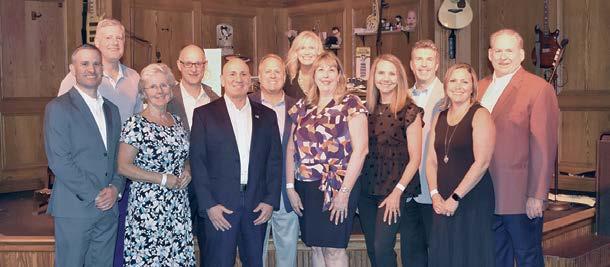
“We could not fulfill our mission without our entire network of donors, volunteers and supporters. No words can express the depth of our thanks to this industry for allowing us to do this work on their behalf.”
ANN GONZALEZ CIF VICE PRESIDENT












AkzoNobel celebrated Independence Day by unveiling a mural at the new Pontiac, MI, Transportation Museum. The museum is expected to open later this year and will honor the industrialization of this community and the many people whose work inspired these efforts.
Through the museum’s existing and growing collections, it will help educate and inspire young people to chart their own destiny in an increasingly digital world. The museum will be in a 55,000-square-foot facility featuring vehicle and artifact display galleries, a theater, research library, classrooms and restoration spaces.
AkzoNobel’s automotive legacy in Pontiac dates back to 1907 and still plays an important role in the automobile refinish market today. AkzoNobel’s heritage includes manufacturing products in the heart of the emerging buggy and transportation industry when the Pontiac Varnish Company first started making varnish in Pontiac.
“Paint for the transportation industry has been made

continuously on this site for 116 years, and today the proud tradition is carried out by AkzoNobel Coatings Inc., who acquired the site in 1985 from Wyandotte Paint Products and replaced it with a modern factory,” said Ricardo Rosso, site manager at the Pontiac Automotive and Specialty Coatings factory.
“Today we manufacture premium coatings for commercial vehicles, vehicle refinishing and collision repair, signage and emergency vehicles for our North American customers.”

Painting the mural at the Pontiac Transportation Museum was part of AkzoNobel’s Let’s Color Program in Pontiac.
The Let’s Color program in North America aims to inspire communities to collaborate with AkzoNobel to transform public spaces into vibrant, colorful places where people can connect, create and thrive. The program works with local organizations, communities and volunteers to revitalize public spaces with paint.
AkzoNobel employees from the company’s Troy and Pontiac
sites applied AkzoNobel’s own International® primer to create a blank canvas on which mural artists with Diaz Sign Art brought color to the rich history of the Pontiac transportation industry and AkzoNobel.
The company’s goal this year is to complete important community projects at each of its factories across North America. AkzoNobel is proud to give back to its communities and to be a part of the fabric at the new Pontiac Transportation Museum.
“The City of Pontiac has a tremendous legacy in wheeled vehicles,” Director Terry Connolly said. “The Pontiac Transportation Museum intends to illustrate this proud history and use it for inspiration of STEM education and for economic development in Pontiac. We also have a robust automotive supply industry in Pontiac. We’ve been pleased by the support of AkzoNobel, and their paint and coatings plant in Pontiac and R&D Center in Troy.”
Source: AkzoNobel
AkzoNobel Vehicle Refinish North America announced the expansion of its partnership with Dave Kindig. Originating in November 2016, the partnership now expands to June 2027.
Kindig is now brand ambassador for AkzoNobel’s flagship Sikkens brand in North America, in addition to the Modern Classikk by Kindig line.
Launched in 2017, the Modern Classikk paint line is based on the Sikkens platform and has grown from an initial pallet of 26 colors to 40 eye-catching colors with the same modern classikk vibe as Kindig himself.
AkzoNobel’s John Griffin, regional director, automotive and specialty coatings, Americas, shares Kindig’s enthusiasm for the continuation of the partnership. “Everything about Dave Kindig exudes talent, quality and excellence,” Griffin said. “We are confident that continuing with him as spokesperson for our Modern Classikk and Sikkens brands will be mutually beneficial.”
Source: AkzoNobel
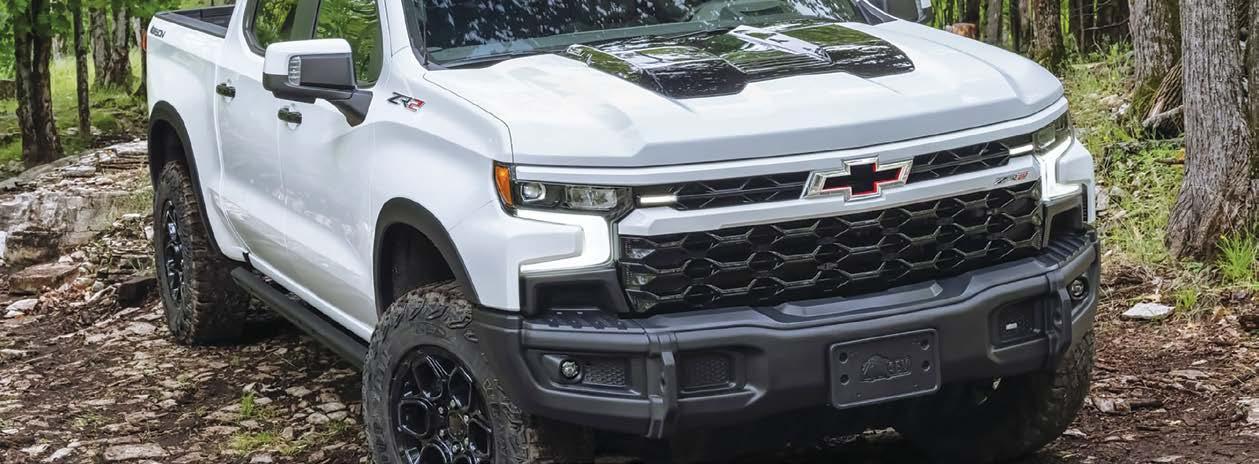


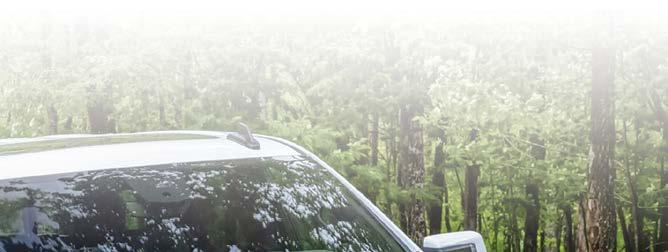









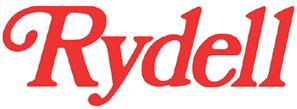
An Illinois motorcycle group is raising a red flag over planned testing of self-driving cars this summer.
Tesla is hiring temporary test drivers around the country, including in Elgin, IL, who will be paid to drive their vehicles and report on their performance.
The automaker has always highlighted data collection from its fleet of millions of vehicles as one of its main advantages in autonomous vehicles. But recently, Tesla seems to be increasingly relying on internal testing.
“We are looking for a highly motivated self-starter to join our vehicle data collection team,” Tesla wrote in the job listing. “The Vehicle Operator role is responsible for capturing high quality data that will contribute to the improvement of our vehicles performance. This role requires a high level of flexibility, attention to
detail, and ability to work in a fastpaced dynamic environment. Day/ night shift positions available.”
autonomous vehicles in recently passed highway bills, so it is up to the states to regulate the technology.



“Our lives are not a field test for autonomous vehicles like Tesla, and Illinois must step up to lead in responsible regulation and development of autonomous technology,” said Witkowski in a statement.
When former Gov. Bruce Rauner, an avid motorcyclist, signed an executive order in 2018 creating an autonomous vehicle testing program, ABATE of Illinois rescinded their endorsement.
ASE President and CEO Tim Zilke and Senior Vice President of Communications Trish Serratore have announced their plans to retire Dec. 31.
Zilke joined the National Institute for Automotive Service Excellence (ASE) in 1991 and was promoted to president and CEO in 2008. Serratore joined ASE in 1988 and was promoted to senior vice president of communications in 2008. She served six years as president of the ASE Education Foundation from 2012 to 2017, before rejoining ASE as senior vice president.
ABATE of Illinois said the technology has killed four motorcyclists already, three of whom they say were run over at highway speeds by Tesla vehicles using similar driving modes.


Josh Witkowski, state legislative coordinator and lobbyist for ABATE of Illinois, said the federal government has removed any reference to
Witkowski pointed to a recent AAA study that found 9% of Americans “trust” self-driving vehicles and 68% are “afraid” of it.

“ABATE of Illinois has been a leader in talking about the dangers of Tesla vehicles in Illinois and nationwide,” said Bob Ellinger, state coordinator of ABATE of Illinois. “We will continue to fight against technology on the road that has shown to be fatal to riders.”

Dave Johnson has been named ASE president and CEO designate effective July 12. Johnson will assume the title and responsibilities of ASE president and CEO on Jan. 1, 2024, upon Zilke’s retirement.
Donna Wagner has been named as the new vice president of industry and media relations for ASE. She will be responsible for both new and existing company relationships along with representing ASE to consumer, corporate, government and technician audiences.
Source: ASE

7885 Brooklyn Blvd. Brooklyn Park, MN 55445
Mon-Fri 7am-7pm Sat 8am-5pm
“Our lives are not a field test for autonomous vehicles like Tesla, and Illinois must step up to lead in responsible regulation and development of autonomous technology,”
JOSH WITKOWSKI STATE LEGISLATIVE COORDINATOR AND LOBBYIST FOR ABATE OF ILLINOIS

Police in Louisville, KY, cracked open a sophisticated multi-milliondollar car theft ring. According to one detective who spoke with local news station WLKY, police who stopped these vehicles for moving violations had no idea the cars were even stolen, so only a minor citation was issued.
thieves used the old trick of VIN cloning, when a legitimate VIN is put on a stolen vehicle, obscuring the history so it can be registered without problems.

According to authorities, many of the cars come from Florida, particularly the Miami-Fort Lauderdale area, but there are others with connections to Texas or Ohio. While they’ve netted millions in high-end vehicles, including a Bentley and multiple C8 Corvettes, and several people have been arrested, detectives believe the rabbit hole goes much deeper.
Often these operations have a national if not an international network of connections, and the organizations usually do more than just steal cars, with drug and human trafficking, shoplifting and other criminal activity often in the mix.
The National Highway Traffic Safety Administration (NHTSA) has asked Tesla for updated data related to an ongoing investigation into 830,000 Tesla vehicles and the automaker’s Autopilot driver-assist system.
The NHTSA is investigating Tesla’s driver-assist system after it identified more than a dozen crashes involving the feature and emergency vehicles. The agency is also investigating whether Autopilot adequately ensures drivers are paying attention while it is operating.
The safety agency sent a letter to Tesla on July 3, requesting updates to inquiries it had made in 2022. A copy of the letter made public by the agency indicated it is demanding answers by July 19, Reuters reported.
instead of radar. The agency had previously inquired about Tesla’s cabin camera, used to check driver attentiveness while Autopilot or FSD is engaged.
Tesla has not shared a comment about the matter as of writing.
Tesla’s Autopilot (AP) allows vehicles to automatically steer, accelerate and brake within their designated lane, while Enhanced Autopilot (EAP) provides Teslas with the capability to perform lane changes on highways.
Tesla’s Full Self-Driving (FSD) Beta allows vehicles to navigate inner-city streets. Despite these capabilities, Autopilot, Enhanced Autopilot and FSD Beta do not make vehicles fully autonomous.
Authorities aren’t disclosing all the details about how this theft ring had been hiding under the nose of police, but it is known the
Louisville police detectives are hopeful they’ll figure out key details like who stole the cars, how they were transported to the area, and who is cloning the VINs.

The new letter also seeks data on the number of vehicles equipped with “Tesla Vision,” which solely relies on cameras



In 2022, the NHTSA said nine out of 11 vehicles in prior crashes exhibited no driver engagement, visual alerts or audible alerts until just moments before a collision occurred. Four vehicles did not receive any visual or audible alerts at all during Autopilot’s final use cycle.
Most small pickups fall short when it comes to protecting passengers seated in the rear, the latest crash test ratings from the Insurance Institute for Highway Safety show.
“Our updated moderate overlap front crash test proved to be challenging for small pickups,” said IIHS President David Harkey. “A common problem was that the rear passenger dummy’s head came dangerously close to the front seatback, and in many cases, dummy measurements indicated a risk of neck or chest injuries. All these things tell us that the rear seat belts need improvement.”

None of the five small crew cab pickups IIHS tested earns a good rating. The Nissan Frontier is rated acceptable. The Ford Ranger earns a marginal rating, and the Chevrolet Colorado, Jeep Gladiator and Toyota Tacoma are all rated poor. The ratings only apply to the crew cab versions.
IIHS launched the updated moderate overlap front test last year after research showed that in newer vehicles the risk of a fatal injury is now higher for belted occupants in the rear than for those



in front. This is not because the rear seat has become less safe. Rather, the front seat has become safer because of improved airbags and advanced seat belts that are
focus on the injuries most frequently seen in back-seat passengers.
rarely available in back. Even with these developments, the back seat remains the safest place for young children, who can be injured by an inflating front airbag.
To encourage manufacturers to improve rear-seat protection, the updated test adds a dummy in the back seat behind the driver. The driver dummy is the size of an average adult man. The rear dummy is the size of a small woman or 12-year-old child. IIHS researchers also developed new metrics that
Tesla’s price cuts have helped the automaker find new customers and grow its sales throughout the U.S. and other markets. But for companies that have made a business out of renting Teslas to customers on a subscriptionbased platform, it spells disaster.
Autonomy, a company that has quickly become the “Tesla” of its respective sector, nearly became a victim of these price cuts.
Scott Painter, CEO of Autonomy, has made Teslas and other EVs available to people in a subscription, paying an up-front price and then a monthly rate more flexible than leasing and less expensive than a long-term rental.
The fleet of Tesla vehicles Autonomy has accumulated over the past few years has a value, and when the EV maker’s price cuts took effect, that value diminished significantly.
“Instead of having an $85 million fleet, we suddenly had a, say, $56 million to $57 million fleet in one day,” Painter said to Bloomberg. “We were very vulnerable to our lenders in that moment.”
The cuts affected Autonomy’s business so much it went through a forbearance process to gain $12 million in new capital and shrunk its workforce significantly from 120 to 45.
Painter and Autonomy initially planned to have 23,000 EVs ordered, but goals announced last year were pushed aside due to the depreciation of its fleet. Autonomy has 1,300 cars currently and will need roughly 1,700 more to break even, Painter said. This will require $20 million more in funding, which will likely unlock $100 million in borrowing capacity.
Autonomy continues to expand into new markets, making its subscription service available to customers across the U.S.

For a vehicle to earn a good rating, there can’t be an excessive risk of injury to the head, neck, chest or thigh, as recorded by the secondrow dummy. The dummy should remain correctly positioned during the crash without sliding forward beneath the lap belt, or “submarining”. The head should also remain a safe distance from the front seatback and the rest of the vehicle interior. A pressure sensor on the rear dummy’s torso is used to check whether the shoulder belt is too high, which can make the restraint system less effective.
As in the original test, the structure of the occupant compartment must maintain adequate survival space for the driver, and measurements taken from the driver dummy shouldn’t show an excessive risk of injuries.
All five small pickups provided good protection in the front seat. However, measurements indicated a slightly higher risk of leg or foot injuries to the driver in the Gladiator and Tacoma.
In the Colorado, Frontier, Ranger and Tacoma, the restraints in the back seat allowed the rear dummy’s head to come too close to the front seatback. That was not an issue for the Gladiator. However, its rear restraints do not include a side curtain airbag, increasing the risk of injury from a hard impact with the interior of the vehicle or even something outside it.
In the Ranger, the rear dummy submarined beneath the lap belt, causing it to ride up from the ideal position on the pelvis onto the abdomen, which increases the risk of internal injuries.
Otherwise, injury measures taken from the rear dummy indicated a moderate or likely risk of both neck and chest injuries in the poor-rated Colorado, Gladiator and Tacoma and a moderate risk of chest injuries in the marginal-rated Ranger.
Source: IIHS



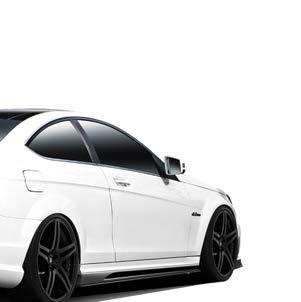


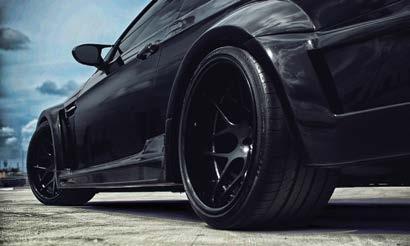


The Collision Industry Electronic Commerce Association (CIECA) announced June 30 that Bryce Boyer, business partner lead consultant for Allstate Insurance Company, joined CIECA’s Board of Trustees, effective immediately.


As part of an auto team that focuses on virtual estimating, one of Boyer’s major focal points is navigating how artificial intelligence (AI) and automation are transforming how Allstate and the industry conduct the estimating business.
Boyer said he is excited to understand and learn how CIECA standards effect the way the industry operates, the far-reaching ways the organization helps to push for efficiency and digging in on the impacts of emerging technology.
Boyer has worked in the insurance industry for more than 25 years. The majority of his roles have focused on automotive. In 1995, he started in Daytona Beach, FL, as a personal lines adjuster and moved into the automotive sector with a year.
Source: CIECA


The percentage of shops getting paid for the labor involved in inspecting seat belts and their associated components has more than tripled since the question about it first began to appear annually in the “Who Pays for What?” survey series in 2016.
This not-included repair operation—for which every OEM has a very specific procedure— is a necessary and required part of a safe collision repair, said Mike Anderson of Collision Advice, adding he will not be satisfied until 100% of shops are performing it.
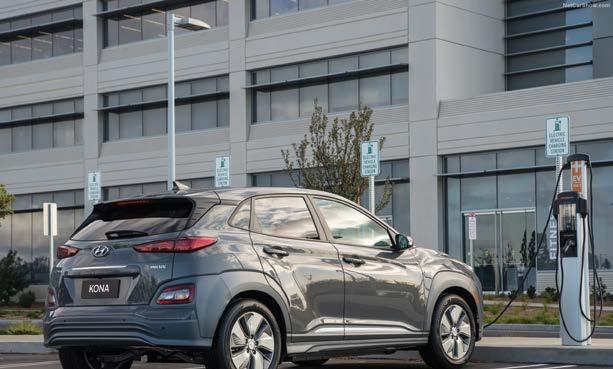

“I know I have been saying this for years, but of the 100-plus not-include’ repair procedures we cover in the surveys each year, this is the one that keeps me awake at night,” said Anderson, who conducts the “Who Pays” surveys with CRASH Network. “Anything less than 100% on this question is very concerning because it indicates to me that too few
shops are researching OEM repair procedures and are thus not aware of this requirement.”






The industry does appear to be headed in the right direction on the procedure. In 2016, 63% of shops acknowledged they had never included it on a final invoice—that’s fallen to about 33% today—and of those who had in 2016, more than half (56%) said insurers would never pay for it. Today, one-third still believe insurers won’t pay them for the procedure, even while 44% of the shops that do charge for it say they get paid all or most of the time by the eight largest national insurers, and another 27% are paid at least sometimes.
“I am glad to see the big improvement, but more is needed,” Anderson said. “As an industry, we must accept responsibility for researching and following the requirements for this on every single vehicle we repair.”
The latest quarterly “Who
Pays for What?” survey is now open through the month of July. It focuses on notincluded frame and mechanical labor operations. Shops can take the survey at https:// www.surveymonkey.com/ r/8CRPC28
Survey participants receive a free report with complete survey findings along with analysis and resources to help shops better understand and use the information presented.
The survey can be completed in less than 15 minutes by anyone familiar with their shop’s billing practices and the payment practices of at least some of the largest national insurers. Each shop’s individual responses are held in the strictest confidence; only aggregated data is released.
The results of previous surveys are also available online at https://www.crashnetwork. com/collisionadvice.
Source: CRASH Network

Classic Collision, LLC, announced a new closing July 7, the acquisition of a Maaco franchise in Fridley, MN.


The owners have provided their customers an easy, affordable and hassle-free experience for many years.








“Our mission has been to be the reliable choice in collision repair and provide excellent customer service and I believe that Classic Collision will uphold that mission,” said Andy McClure, former owner of Maaco Fridley Franchise.

“We’re honored to welcome the Maaco Fridley team to the Classic family. We recognize their dedication to excellent customer experience and being the local repair choice. We look forward to adding these locations to our Minnesota market,” said Toan Nguyen, CEO of Classic Collision.
Source: Classic Collision

The cost of new car repairs has been steadily rising over the years. Increased complexity, new components and a trend towards non-repairable energy-dissipating elements mean if you’re in a collision in a new car, you’re likely going to have to pay more than ever to get it back to showroom condition.

Predictably, the rise in average repair costs—an increase of 36% since 2018—is having a knock-on effect on insurance premiums.
According to Mitchell, a company that tabulates data from insurance and auto repair, insurance rates are up by 17% in the last 12 months through May.

“The modern digital architecture is so advanced that systems beyond point of impact are being disrupted,” said Ryan Mandell, director of claims performance for Mitchell, speaking to The New York Times. “Getting a car back to pre-loss condition is harder than at any point in history and will only become more challenging.”
But despite various incidents


highlighting the sometimes excessive repair quotes for EVs, such as when a rear-ended Rivian R1T was given a $42,000 repair estimate, the data could tell a different story. In fact, while the average repair costs of an EV following an accident are indeed higher, they’re not markedly so over their ICE counterparts.
while premium segment vehicles are roughly equal in their repair costs.


There are other factors at play too. According to the data, 18% of combustion vehicles involved in crashes have to be written off, while only 6% of EVs are totaled. Meanwhile, according to evidence from the Highway Loss Data Institute, for models that are available in both electric and ICE variants, such as the Hyundai Kona and the Volvo XC40, the EVs are just 2% more expensive to fix.

At first glance, Mitchell’s results show EVs cost $2,400 more, on average, to fix than combustion vehicles after an accident. However, 75% of electric cars involved in accidents are classed as luxury models, which cost between $40,000 and $110,000 new. Fixing a more mainstream EV—such as those from Nissan—costs only $800 more than its ICE equivalent,
Although a damaged battery pack is still going to jack up repair costs, automakers are working on ways to minimize the financial burden of such replacement. BMW‘s EVs allow for the modular replacement of battery elements identified thanks to crash sensors. GM is developing a similar method to allow dealerships to replace individual battery modules, and the Ford Mustang Mach-E can swap overall components into a new battery tray.

A 2003 Dodge Ram 1500 owner who was riding in the front passenger seat of the truck was killed May 13 when the Takata airbag inflator exploded in a crash.
Fiat Chrysler (FCA) has issued a “DO NOT DRIVE” warning for 2003 Dodge Ram 1500 trucks that have not had their Takata airbags replaced.
The National Highway Traffic Safety Administration confirmed the fatality was caused by a ruptured passenger-side Takata airbag inflator, and it involved one of 385,686 trucks recalled in 2015.
Like several automakers involved with Takata airbag recalls over many years, Chrysler said owners continue to ignore the importance of the Takata recalls.
“Six recall notices were sent to this customer’s home address. All went unheeded,” FCA said.

At least 26 people have been killed in the U.S. by exploding Takata airbag inflators in various models from several automakers, but it’s the first fatality in a Ram truck.
“The company extends its deepest sympathies to the family and friends of the customer whose life was lost in the May tragedy. It is the fourth such incident known to involve an FCA-brand vehicle,” Chrysler said.
of dying or being seriously injured because of a defective, recalled Takata airbag. These repairs are absolutely free and could save your life.”
NHTSA is correct, and there is no reason any of these trucks should not have been repaired long ago.
Automakers involved in the Takata airbag disaster have taken extreme measures to convince vehicle owners to keep occupants safe by having their vehicles repaired. In some cases, manufacturers have sent teams of representatives to the homes of owners across the country in an attempt to convince customers to have the airbag inflators replaced.
free repairs.

The owner loaned the Chrysler 300 to a family member who was killed when the driver’s airbag exploded.
The “do not drive” warning for 2003 Dodge Ram trucks joins stopdriving warnings for 2005-2010 Dodge Magnum, Dodge Challenger, Dodge Charger and Chrysler 300 vehicles with unrepaired recalled Takata airbags.
According to FCA, it will provide free alternative transportation to assist customers with getting to and from dealerships.
NHTSA said if a recalled Ram truck has not been repaired, occupants are “at grave risk of serious injury or death.”
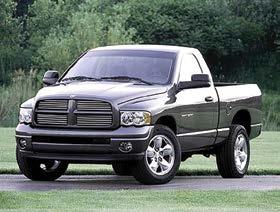


“The older a defective Takata air bag inflator gets, the more dangerous it becomes,” said NHTSA Acting Administrator Ann Carlson “Please, get your airbag replaced now for your sake, and for the sake of those who love you. Don’t put yourself or someone you love at risk
In 2022, it was confirmed a Chrysler 300 driver was killed by a Takata airbag even though the owner asked FCA about the airbag recall in 2018. However, the Chrysler owner declined to have the airbag inflator replaced and the automaker continued to send warnings about the airbags.
According to FCA, the company tried “114 outreach attempts” during a period of seven years but the vehicle was never brought in for


If you own one of these recalled vehicles or believe you know someone who does, call the Fiat Chrysler Takata call center at 833585-0144 or visit www.mopar.com/ en-us/my-vehicle/recalls/takatarecalls.html

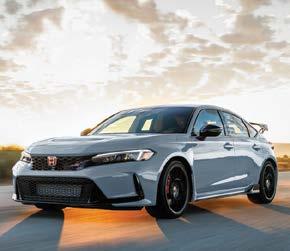
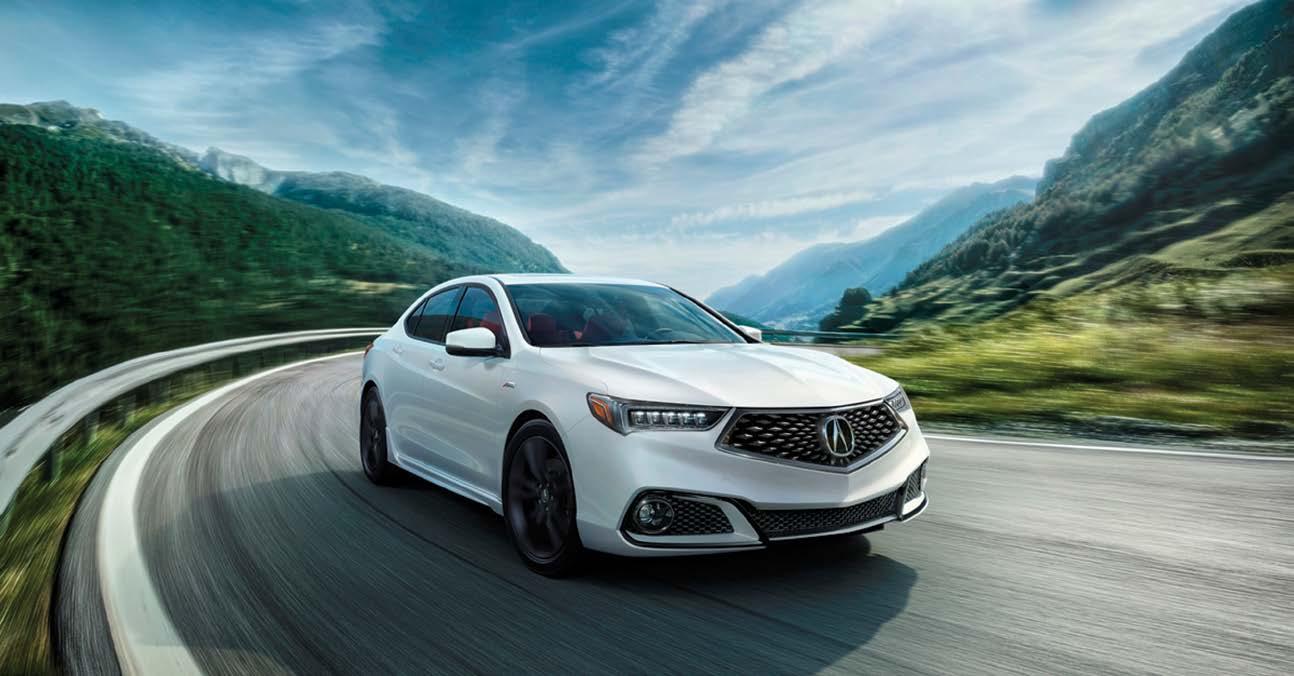







Ford was America’s best-selling brand in the second quarter of 2023 on the strength of its trucks, EVs and new vehicle launches, posting sales gains of 11.2% for the quarter.
Ford is now the best-selling brand and has the best-selling truck in America for six consecutive months this year. F-Series has been the bestselling truck in America for 46 years in a row.
Ford truck sales accelerated in Q2, climbing 26.2% on the strength of the new Super Duty and improved inventory flow. This is the second straight quarterly gain for Ford and best Q2 sales performance since pre-COVID 2019.
Ford was the No. 1 selling truck manufacturer in Q2 and for the first half of the year. Sales climbed 26.2% in Q2. Through the first half of 2023, Ford’s overall truck sales totaled 549,625, up 23.1% and outselling GM’s trucks and vans by approximately 61,000 trucks.
Ford EV Sales Gain Momentum
Ford’s EV sales continue to grow building on the sales momentum of the F-150 Lightning and Mach-E, which achieved higher sales
through stronger inventory.
“Ford achieved both best-selling brand and truck for six consecutive months this year on the strength of F-Series, vans, our new Escape and F-150 Lightning,” said Andrew Frick, vice president, sales distribution, and trucks. “Our EV sales continue to grow. Improved Mustang Mach-E inventory flow began to hit at the end of Q2 following the retooling of our plant earlier this year, which helped Mustang Mach-E sales climb 110 percent in June.”
F-150 Lightning sales were up 119% in Q2 over year ago and a 4.1% gain from Q1. F-150 Lightning continues to attract new customers to Ford with 50% new to the brand, based on most recent conquest data. Year-to-date, Ford EV sales rose 11.9%. Ford’s overall EV sales were up 35.5% in June.
With the launch of Ford’s all-new Super Duty pickup and chassis cabs, F-Series sales increased 34% increase in Q2 on sales of 212,516 F-Series trucks. That’s up 24.7% from the first quarter. F-Series total industry share hit almost 36% in Q2—up almost 5 full percentage points over Q2 last year.
Michigan
MAPLE HILL HYUNDAI
Kalamazoo
5622 W. Main St. 800-323-0022
269-978-0191 Direct 269-342-0065 Fax
Through the first half of this year, F-Series remains America’s best-selling truck on sales of 382,893 trucks—outselling secondplace Silverado by approximately 118,000 trucks. Ford Maverick sales increased 7.8% in Q2 ahead of additional capacity coming online in July to meet continued strong customer demand.
Combined F-Series, Ranger and Maverick sales of 246,155 pickups outsold all of GM’s Silverado, Sierra, Colorado, Canyon and Hummer EV in Q2 of this year. Ford’s combined sales of F-Series, Ranger and Maverick were up 26.7% in Q2 over a year ago.
The strength of Ford’s vans continued to shine for the quarter. Transit continued as America’s bestselling van in Q2 on sales of 32,031— up 30.1%, compared to year ago.
Ford E-Series vans increased 63.7% in Q2 and are up 55.7% this year. Ford was No. 1 in commercial sales, based on the most recent registration data through April. Ford’s U.S. Class 1-7 commercial trucks and vans share grew to 40.3%, up 1.0 percentage point from the same period a year ago.
Ohio CLASSIC HYUNDAI
Mentor 8460 Tyler Blvd. 440-266-6750
440-266-6763 Fax
Mon-Fri 7am - 6pm Sat 7am - 3pm jkash@driveclassic.com www.driveclassichyundai.com
COLUMBIA HYUNDAI

Cincinnati 10981 Montgomery Road 513-489-6333
866-381-9975 Fax
Mon-Fri 8am - 5:30pm; Sat 8am-12pm columbiaparts@josephauto.com www.columbiahyundai.com

Meanwhile, Lincoln closed the quarter with sales gains thanks to improved inventory. Navigator Q2 sales increased 20.1% on sales of 4,688 vehicles, while sales of the new Lincoln Corsair climbed 27% in June to end the quarter. Nautilus sales also saw a 58.5% increase in June at the end of Q2.
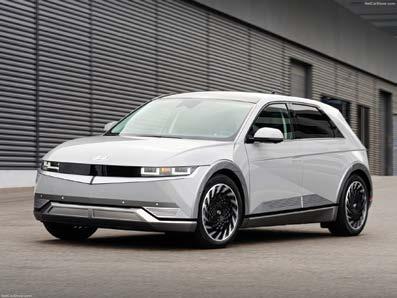
BlueCruise, Ford’s driver assist technology, continues to be a hit with customers. Customer usage has now surpassed 90 million hands-free driven miles, cumulatively, a 40% increase since the end of Q1. Ford’s latest version of the technology, BlueCruise 1.2, allows hands-free lane changes with the tap of a turn signal and delivers a more seamless driving experience. Ford will continue to improve the BlueCruise experience for its customers and deliver it through over-the-air updates.
Sales of the new Escape were up 28.7% in Q2. Forty percent of Escape Q2 sales are the new ST-Line series. Nearly half of the Escape Plug-in Hybrid customers are new to Ford.
Source: Ford
GANLEY WESTSIDE HYUNDAI
North Olmsted 25600 Lorain Rd. 440-734-9375
440-686-3426 Fax
Mon-Fri 8am - 6pm nicholas.b@ganleywestside.com
Drivers desiring faster commutes might view a higher speed limit as a boon, but is it always the safest choice? And what about the safety needs of pedestrians, cyclists, and others?
A new study by the AAA Foundation for Traffic Safety found raising posted speed limits may do little to save time and increase traffic flow but could lead to more crashes, injuries and deaths.
The AAA Foundation’s research results varied across all 12 roadway sites examined. All had new posted speed limits—six raised and six lowered—and included various road types. Raising posted speed limits was associated with increased crashes on two interstate highways. At the same time, the study also found that lowering posted speed limits led to fewer crashes in many cases examined. But the likelihood of speed limit violations increased after lowering posted speed limits, suggesting the need for better public awareness education tied to
these changes.
AAA urges transportation officials to apply a “holistic” approach when setting or changing posted speed limits and prioritize safety over speed and capacity.
Speeding is a critical factor in vehicle crashes across the nation. According to the National Highway Traffic Safety Administration (NHTSA), there were more than 42,000 traffic deaths in 2021 and again in 2022, the highest levels in 16 years. NHTSA reported speeding was a factor in nearly 29% of the fatalities in 2021 and 27% in 2022.
The foundation study found:
Raising posted speed limits was associated with increased crash frequencies and rates for two of the three interstate highways examined.

use and historical crash data. AAA supports automated speed enforcement, but programs must be carefully implemented to maintain community support, prioritize equity and consistently drive improved safety.
“The movement in statehouses to raise speed limits is happening across the country in at least eight states this year,” said Jennifer Ryan, director of state relations for AAA. “But the benefits are overrated, and the risks are understated. Increasing speed limits does not always yield the positive results envisioned by traffic planners.”
“Our study analyzed before and after data on a dozen roadways that raised or lowered posted speed limits and found no one-size-fitsall answer regarding the impact of these changes,” said Dr. David Yang, president and executive director of the AAA Foundation. “However, it is critical to consider the safety implications when local transportation authorities contemplate making changes with posted speed limits.”





Lowering posted speed limits was associated with decreased crash frequencies and rates for one of the two principal arterials examined.
Changes in travel times were small in response to both raised and lowered speed limits.
AAA recommends changes in posted speed limits should consider a range of factors, including but not limited to the type of road, surrounding land
This study is the third phase of the AAA Foundation research examining the effect of posted speed limit changes on safety. In the foundation’s first study, traffic engineers were asked how posted speed limits are set and what factors they consider in changing them. In the second phase, crash testing revealed that small speed increases have severe and potentially deadly effects on crash outcomes.
Source: AAA
800-362-1679
515-270-9095
515-270-5008 Fax
Hours: M-F 7-6; Sat 8-4:30 parts@charlesgabus.com
Rusty Eck Ford
WICHITA
316-685-9131
316-685-7759 Fax
Hours: M-F 8-5
734-721-2550
734-721-0980 Fax
Hours: M-F 8-6 parts@demmer.com
614-861-8251 Fax
Hours: M-F 7-6 parts@masheter.com
800-462-4685
414-529-1014 Fax
Hours: M-F 7:30-5; Sat: 7:30-12pm parts@hillerford.com

Stellantis on June 27 launched Free2move Charge, a 360-degree system that will seamlessly deliver charging and energy management to address all EV customer needs, anywhere and in any way. Managed by the new Stellantis Charging & Energy Business Unit, Free2move Charge addresses electric vehicle customer needs at home, in their business and on-the-go.
“As the pace of mainstream EV adoption accelerates, our customers need us to be more than just a mobility provider,” said Ricardo Stamatti, Stellantis senior vice president, Charging & Energy Business Unit. “We are taking the lead in establishing a dedicated business unit that will support our bold electrification strategy and act as a natural extension of our iconic brands. Free2move Charge is the first product rolling out, exemplifying our purpose of delivering performance, value, sustainability and electrified mobility freedom for all.”
Making it easy to Always Be Charged (the e-ABC Promise), Free2move
The Collision Industry Foundation (CIF) is delighted Crash Champions joined the CIF Annual Donor Program at the Urgent Care (second highest) tier.
Introduced in 2021, the Annual Donor Program was designed to bring needed recurring resources to the foundation, so it can deliver on its mission to “Answer the Call” when those in the industry have been impacted by catastrophic events such as wildfires, hurricanes and flooding. Learn more about the tax-deductible donations for the program at www. collisionindustryfoundation.org/ uploads/1/2/0/0/120099486/ cif_ad_order_form2023-0313.pdf
For more than two decades through the generous support of corporations and individuals, CIF has been able to assist hundreds of collision repair professionals in need after disaster.
CIF is grateful for Crash Champions’ first time support of the Annual Donor Program.
Source: CIF
Charge also makes it smart, understanding users’ needs and optimizing overall energy management to improve efficiency, reliability and access, reducing the total cost of ownership and maximizing environmental benefits.
Working with a Free2move e-Genius team, customers will be able to create a personalized package they can change and adapt at any time during the ownership experience, allowing it to evolve and always be tailored to their needs. e-Genius support will be available first in Europe.
By removing barriers to battery electric vehicle ownership, including charging anxiety, Free2move Charge is a key tool to achieve the goals of the Stellantis Dare Forward 2030 strategic plan, including reaching a 100% passenger car battery electric vehicle (BEV) sales mix in Europe and a 50% passenger car and light-duty truck BEV sales mix in the U.S. by 2030.
Free2move Charge: Built on Three Pillars
Free2move Charge Home delivers private customers support with installation, financing and warranty
of home charging and other energy hardware and services. Options can range from AC charging cables and wall boxes today to Vehicle-2Home, Vehicle-2-Grid and complete energy management systems with cutting-edge features like touchfree wireless solutions and inductive robot charging under development for future releases.
Free2move Charge
Business tackles all hurdles as a onestop-shop platform with a full suite of charging and energy services: earlyon support, estimation of initial and future running costs, right-sizing of charging infrastructure, installation, maintenance and public charging access while on the go.
Free2move Charge GO guarantees seamless access to the largest possible curated network of public charging points through partners in North America, Europe and other regions to be announced soon. In addition to access, payment and 24-7 support, Free2move Charge GO will progressively launch leading features like Plug and Charge, reservations, loyalty programs, subscriptions, prepaid packages, single invoice/billing and
even deliver a charge to a requested location when needed.

Free2move Charge will harness the power of the Stellantis Energy Cloud, seamlessly integrating with vehicle-branded mobile apps and the state-of-the-art STLA SmartCockpit platform launching in 2024 to deliver fast, intelligent routes and charging recommendations to customers based on their actual usage and needs. Free2move Charge will guide Stellantis customers through an onboarding process to understand their individual needs, allowing for deep personalization and using AI learning to constantly improve its knowledge about the most convenient individual charging experience.
Free2move eSolutions, a Stellantis tech company, will continue to develop and provide industry-leading charging hardware and software that supports the Free2move Charge ecosystem, as well as non-captive customers, and work with other industry leaders to bring more EV charging solutions to market.

Learn more at free2movecharge. com.
Source: Stellantis
Fax
M-Th 7 am - 7 pm
F 7 am - 6:30 pm
Sat 8 am - 2 pm dlucas@sheasavings.com
Minnesota Mills Parts Center WILLMAR
800-247-1158
866-235-6700 Fax
M-F 8 am -
Ohio #1 Cochran Chevy Buick GMC YOUNGSTOWN
800-476-0760
330-726-2297
330-726-0709 Fax
Mon-Thu 7am-6pm Fri 7am-5:30pm Sat 7am-3pm mattf@sweeneycars.com

Jake Sweeney Chevrolet SPRINGDALE

800-582-5253
513-782-2829
513-782-2846 Fax
M-F 7:30 am – 6 pm Sat 8 am – 2 pm
cscott@jakesweeney.com www.jakesweeneychevy.com
Joseph Chevrolet CINCINNATI
800-752-1423
513-741-6735
513-741-3814 Fax
M-F 7:30 am – 5:30 pm Sat 7:30 am – Noon
josephgmparts@yahoo.com
New vehicles are becoming more problematic, evidenced by the number of problems per 100 vehicles (PP100) rising a record 30 PP100 during the past two years. According to the J.D. Power 2023 U.S. Initial Quality Study (IQS), released June 22, the rise in problems is 12 PP100 greater than in 2022, which follows an increase of 18 PP100 in 2022 from 2021. In 2023, the industry average is 192 PP100. A lower score reflects higher vehicle quality.

The continuing decline in quality can be attributed to multiple factors such as greater usage and penetration of technology; continued integration of known problematic audio systems into other new models; poor sounding horns; cupholders that don’t serve their purpose; and new models with 11 PP100 more than carryover models.
“The automotive industry is facing a wide range of quality problems, a phenomenon not seen in the 37-year history of the IQS,” said Frank Hanley, senior director of auto benchmarking at J.D. Power. “The industry is at a major crossroad and the path each manufacturer chooses is paramount for its future. From persistent problems carrying over from years past to an increase in new types of problems, today’s new vehicles are more complex— offering new and exciting technology--but not always satisfying owners.”
The U.S. Initial Quality Study, now in its 37th year, is based this year on responses from 93,380 purchasers and lessees of new 2023 model-year vehicles who were surveyed early in the ownership period. The study is based on a 223-question battery organized into nine vehicle categories: infotainment; features, controls and displays; exterior; driving assistance; interior; powertrain; seats; driving experience; and climate. The study is designed to provide manufacturers with information to facilitate the identification of problems and to drive product improvement. The study was fielded from February through May 2023. While problems with driving experience are flat year over year, quality declines in all other categories. The largest year-over-year increase in the number of problems is in the features, controls and displays category (+3.2 PP100), followed by infotainment (+2.3 PP100).
Vehicle basic door handles are increasingly problematic: Opening a door was once a non-discussion point— an aspect of a vehicle that had been examined, engineered and mastered. The basic touch point of door handles is now a percolating problem area as manufacturers attempt to redesign them. Owners are having issues with high-tech approaches to this
basic function; seven of the 10 most problematic models in this area are battery electric vehicles (BEVs).


Safety systems causing problems: More than three-fourths (80%) of owners say their new vehicle includes all four of the primary driver assistance features—forward collision warning, lane keeping assistance, lane departure warning and blind spot warning. However, problems owners encounter in the driver assistance category have increased 1.8 PP100 year over year. The most problematic areas are lane departure warning/lane keeping assistance (7.2 PP100) and forward collision warning/automatic emergency braking (5.0 PP100) for those that have these features.
Owners increasingly happier with apps: Manufacturer smartphone apps improve 0.4 PP100 this year as the market penetration rate grows to 76%. BEV owners in particular use their app at least 68% of the time, primarily to monitor the charging process and to view their vehicle’s available range. The higher usage and unique BEV use cases translate to more problems experienced using the app in comparison to those with an internal combustion engine vehicle. Android Automotive Operating System (AAOS) issues: A 21.5 PP100 gap exists between vehicles that have an Android Automotive OS without Google Automotive Services (51.1 PP100) and those vehicles that don’t have this system (29.6 PP100). This is only for the operating system for in-vehicle infotainment, not for the smartphone mirroring systems of Android Auto or Apple CarPlay.
Smartphone charging becomes most deteriorated problem: Across all 223 problems measured in the study, wireless charging pad not working properly has increased by a sizable 1.1 PP100 and is driven by both increased penetration and more usability issues with the technology. Users are experiencing several problems, including poor location, phone overheating and intermittent charging, if at all. “This is the area where manufacturers really have the opportunity to delight customers with this convenience, but instead are creating a problem for them,” Hanley said.
Biggest movers and shakers: Brands that show the largest year-over-year improvement are Maserati (73 PP100 improvement), Alfa Romeo (68 PP100 improvement) and Ram (45 PP100 improvement).
Unofficially ranked automakers fill bottom spots: Tesla Motors, with 257 PP100, increases 31 PP100 year over year, while Polestar (313 PP100) improves 15 PP100 year over year. Lucid Motors (340 PP100) and Rivian Motors (282 PP100) are included in the industry calculations for the first time but have
too small a sample size to be award eligible. These automakers are not officially ranked amongst other brands in the study as they do not meet ranking criteria. Unlike other manufacturers, they do not grant J.D. Power permission to survey its owners in states where authorization is required. Nonetheless, a score was calculated based on a sample of surveys from owners in the other states.
Highest-Ranking Brands and Models Dodge is the highest-ranking brand overall in initial quality with a score of 140 PP100. Among mass market brands, Ram (141 PP100) ranks second and Buick (162 PP100) ranks third.
Among premium brands, Alfa Romeo ranks highest with a score of 143 PP100. Porsche (167 PP100) ranks second and Cadillac (170 PP100) ranks third. The parent corporation receiving the most model-level awards is General Motors Company (seven awards), followed by Hyundai Motor Group (five) and Toyota Motor Corporation (four). Among brands, Chevrolet and Kia receive the most segment awards (four).
General Motors Company models that rank highest in their respective segments are Buick Encore GX, Cadillac Escalade, Cadillac XT6, Chevrolet
Camaro, Chevrolet Corvette, Chevrolet Equinox and Chevrolet Tahoe.
Hyundai Motor Group models that rank highest in their respective segments are Genesis G80, Kia Carnival, Kia Forte, Kia Rio and Kia Stinger.
Toyota Motor Corporation models that rank highest in their respective segments are Lexus GX, Lexus IS, Toyota Camry and Toyota 4Runner.
Nissan Motor Co., Ltd. has the highest-ranking model overall, the Nissan Maxima with 106 PP100, and the Nissan Murano ranks highest in its respective segment.

Toyota Motor Corporation’s Tahara Lexus, Japan, plant, which manufactures the Lexus IS, Lexus LS and Lexus NX, receives the Platinum Plant Quality Award. Plant quality awards are based solely on defects and malfunctions and exclude design-related problems.
General Motors Company’s plant in San Luis, Potosi, Mexico, which produces the Chevrolet Equinox and GMC Terrain, receives the Gold Plant Quality Award for North/South America. BMW AG’s plant in Born, Netherlands, which produces the MINI Cooper and MINI Countryman, receives the Gold Plant Quality Award for Europe and Africa.
Source: J.D. Power
Hawkinson Kia



Matteson
(708) 720-8972
(708) 720-0657 Fax
M, W, F 6am-5pm Tu, Th 6am-7pm; Sat 8am-2pm
jmihas@hawkinsonnissankia.com www.hawkinsonnissan.com/ez-parts
Raymond Kia Antioch
(847) 395-3600
(847) 838-7997 Fax
M-F 7am-6pm; Sat 7am-2pm kweber@raymondchevrolet.com


KANSAS
Midwest Kia Wichita
(316) 652-2960
(316) 652-2992 Fax
M-F 8am-6pm; Sat 8am-2pm jjensen@midwestkia.com
Kia of Lansing Lansing

(517) 393-5700
(517) 393-6767 Fax
M-F 7:30am-6pm
mattr@lansingisyoung.com www.kiaoflansing.com
Seelye Kia of Kalamazoo
Kalamazoo
(269) 488-0614
M-F 7am-6pm gmeskil@seelye.com
MINNESOTA
Lupient Kia of Brooklyn Park
Brooklyn Park
(800) 569-5735
(763) 424-9437
(763) 424-4631 Fax
M-F 7am-6pm
Lou Fusz Kia St. Louis
(877) 221-4151
(314) 595-4942 Fax
M, W, F 7am-8pm; Tu, Th 7am-6pm Sat 7:30am-4pm fuszkiaparts@fusz.com
www.kia.fusz.com
Napleton’s Mid Rivers Kia St. Peters
(888) 816-9729
(636) 926-0683 Fax
M-F 7am-6pm; Sat 7am-3pm bprinster@napleton.com pschnare@napleton.com www.midriverskia.com


Suntrup Kia St. Louis
(800) 727-8496
(314) 815-3060 Fax
M-F 7am-5pm www.suntrupkiasouth.com
Kia of Fargo Fargo
(800) 728-7601
(701) 282-5924 Fax
M-F 7am-5:30pm; Sat 8am-5pm

Collision Repair Education Foundation (CREF), Audi of America and Volkswagen of America are proud to announce they have partnered to donate 78 Audi and Volkswagen vehicles to collision repair programs throughout the U.S.
Upon evaluation, a group of Audi and Volkswagen employees knew this wasn’t the end for these vehicles as they were still functioning and intact.
The CREF team got to work with Audi and Volkswagen on how these vehicles could serve a new purpose.
sales service at Audi of America. “This was an opportunity where creativity and an open mind enabled us to live our sustainability values and map out a new way to help our industry.”
Allen partnered with Tony Russo, Volkswagen Group of America damage prevention and port policies senior specialist, to reimagine the use of many vehicles damaged beyond reasonable repair. The Audi and Volkswagen team worked directly with CREF to help facilitate the donation of these vehicles.
Project Management Amber Ritter
“The foundation is incredibly grateful for this donation, and we are looking forward to seeing how the donation of both ICE vehicles and EVs benefit students’ ability to better prepare for industry careers.”
The donated vehicles range from large SUVs like the Audi Q7 to comparatively smaller cars like the Audi A3. There is also a mix of both ICE vehicles and EVs, including the Volkswagen ID.4 and Audi e-tron.
These donations will enhance the education of thousands of collision repair students and support the next generation of the automotive workforce. In a rapidly changing industry, it is critical students have access to the latest vehicles and technology.
The donated Audi and Volkswagen vehicles were damaged during shipping to the point that they could no longer be sold to customers.
Months of planning, coordinating and reviews among this dedicated group of Audi and Volkswagen employees, CREF and schools resulted in the donation of these vehicles to automotive training programs throughout the country.
“We want to advance the next generation of technicians, and we’re committed to a more sustainable future,” said Mark Allen, manager of collision, equipment and EV after-
Allen and Russo also coordinated with Audi and Volkswagen dealerships and collision centers near the various schools, to ensure there is support for both the students and the schools by providing career opportunities for students and sourcing parts and addressing any technical questions for the school.
“Audi and Volkswagen are giving back to the industry and the communities they work in by connecting their certification programs to the donation. They aren’t just donating the cars; they are also connecting local dealerships and national training staff to the schools receiving the donations to ensure the sustainability of these programs,” said CREF Director of Marketing and
Maple Hill Subaru Kalamazoo
(800) 323-0022
Direct (269) 978-0191
(269) 342-0065 Fax
Mon-Fri 8-5:30 www.maplehillauto.com
The following dealerships are eager to serve your needs. Call
Luther Bloomington Subaru
Bloomington
(800) 451-5078
Direct (952) 887-0600
(952) 881-1787 Fax
Mon 6:30-6; Tue-Fri 6:30-9; Sat 8-4 parts@bloomingtonsubaru.com www.bloomingtonsubaru.com

Morrie’s Brooklyn Park Subaru Brooklyn Park
(800) 343-6999

The schools benefiting from these Audi and Volkswagen donations include the following:
Maryland
Center of Applied Technology North, Severn
Center of Applied Technology South, Edgewater
Gaithersburg High School, Gaithersburg
Michigan
Oakland Community College, Rochester Hills
Oakland School Technical Campus (OSTC)
OSTC Southeast, Clarkston
OSTC Northeast, Pontiac
OSTC Southeast, Royal Oak OSTC Southwest, Wixom
Dean Team Subaru Ballwin
(636) 227-6527
(636) 591-0071 Fax
Mon-Fri 7-5
Byers Airport Subaru Columbus
(614) 552-5490
Mon-Fri 7:30-6; Sat 8-12 wholesaleparts@byersauto.com
Ken Ganley Subaru North Olmsted North Olmsted
Toll Free (888) 850-0633
Direct (440) 788-7060
(440) 788-7085 Fax
Mon-Fri 8-7 Tue-Fri 8-6 Sat 8-5
jtjoyce@ganleywestside.com
’re focused on getting you the Genuine Parts you need — fast and competitively priced. Put us to the test on your next Subaru repair or service job.

(763) 765-1462
(763) 765-1487 Fax
Mon-Fri 7-7; Sat 8-5 bpsubaruparts@morries.com www.brooklynparksubaru.com
New Jersey
Passaic County Technical Institute, Wayne
Tennessee
Bradley Central High School, Cleveland
Chattanooga State Community College, Chattanooga
Tennessee College of Applied Technology (TCAT)
TCAT, Crossville
TCAT, Knoxville
TCAT, Livingston
TCAT, Morristown
Texas
JB Hensler College and Career, Manvel
Virginia
Academies of Loudon, Leesburg
Northern Virginia Community College, Alexandria
Leaders from the various schools emphasized the importance of their students having the opportunity to work on newer vehicles with current technology. Having this access will put their students in a position to become higher skilled entry-level technicians when they graduate.
“The donations will have a major impact on providing engaging,

thing
hands-on instruction for 480 students across four CTE [Career and Technical Education] campuses throughout Oakland County,” said Christopher Vraniak, campus dean for OSTC Southwest. “The donated vehicles that are assembled and equipped with the newest technology provide our students with the opportunity to train on the cutting edge of the industry. Moreover, the EVs will put our students well ahead of the curve when it comes to the latest industry trends. This is greatly important; our advisory committee has shared that the industry is rapidly moving towards EVs, so the donation of four EVs to our campuses was a very significant donation for which we are very, very grateful. This is one of the largest donations we have ever received and will be a foundation for our students moving forward.”
the state’s community colleges. “This partnership and donation helps further the mission of the Foundation for the College System of Tennessee to continually look for ways to bring in equipment and funding to help train our students as they learn at our colleges and make great employees.”
state-of-the-art vehicles.
Quarter Page (no bleed) | 4˝ x 5˝
“It is important to always be ahead and prepared for what is coming in the industry as our graduates are employed by companies throughout Tennessee and the nation,” said Cris Perkins, associate vice chancellor for strategic advancement and executive director of the Foundation for the College System of Tennessee, which supports the public Tennessee Colleges of Applied Technology and
“All of these programs are often underfunded, so finding parts and cars is the hardest aspect these instructors face when reviewing their budgets. They operate on a shoestring of funds, making it incumbent on the instructor’s ability to trade, buy and sell cars or have fundraising events to fund their program,” said Tim Pfeifle of Tysons Corner Collision Center in Vienna, VA. “This donation will help many local programs, and I am so proud my supporting manufacturer is making this very generous donation, which will pay dividends to our industry for years to come.”
Audi and Volkswagen also recognize the need for students to receive the proper training on these modern vehicles, especially at a time when the nation is experiencing a major shortage of collision repair specialists. These donations further the goals of Audi and Volkswagen to attract and educate technicians on
“We have paired these learning institutions with local Audi Authorized Collision Center or VW Certified Collision Centers as well Audi and VW dealers. These relationships will provide opportunities for mentoring and opportunities for future employment,” Russo said. “The schools will use the vehicles for both technical and collision classes until the vehicles can no longer provide any additional training value.”
Once the vehicles can no longer provide value to classrooms, learning institutions will contact their local first responders who will use the vehicles for further training. First responders look for the latest equipment to use during training, allowing them to learn the cut points and other hazards when conducting extrication drills. The remains will then be sent off for recycling. Industry members interested in getting involved and supporting the Collision Repair Education Foundation’s efforts to assist secondary and post-secondary collision repair training programs can contact us to learn about the many ways to get involved. Monetary donations can be made online.
Source: CREFAudi Part Professionals are experts on collision parts, replacement components and mechanical items

MICHIGAN
Maple Hill Volkswagen Kalamazoo
800-323-0022
Direct 269-978-0191
Fax: 269-342-0065
M-F 8am-5:30pm www.maplehillauto.com
MISSOURI
Dean Team Volkswagen of Ballwin Ballwin
636-227-6527
Fax: 636-591-0071
M-F 7am-5pm
MISSOURI
Molle Volkswagen Kansas City
816-941-4969
816-941-1969
M-F 7am-6pm; Sat 8am-3pm jbarczak@mollevw.com ewolf@molleautogroup.com

OHIO
Byers Volkswagen Columbus
614-552-5490
M-F 7:30am-6pm; Sat 8am-12pm wholesaleparts@byersauto.com
ILLINOIS
Audi Exchange Highland Park 847.432.5880 847.432.5708 Fax audi.parts@audiexchange.com
MICHIGAN
Find
MISSOURI
Kansas City Audi
Kansas City
866.949.9500 Toll Free 816.941.4969 Direct 816.942.3156 Fax
M-F 7am-6pm; Sat 8am-5pm ewolf@molleautogroup.com jbarczak@mollevwgroup.com
Audi Kalamazoo Kalamazoo 800.323.0022 Toll Free 269.978.0191 Direct 269.342.0065 Fax
M-F 8am-5:30pm www.maplehillauto.com
OHIO
Audi Columbus Columbus 614.552.5490
M-F 7:30am-6pm Sat 8am-12pm wholesaleparts@byersauto.com
And with over 170,000 Genuine Volkswagen Collision Parts to order from, we’d love to help you find the ones you need.We’ve got a
for quality partsVolkswagen” and the Volkswagen logo are registered trademarks of Volkswagen AG. ©2023 Volkswagen of America, Inc.
Publisher Jeremy Hayhurst
General Manager
Barbara Davies
Editor
Abby Andrews
Contributing Writers
Mike Anderson, Ed Attanasio, Stacey Phillips, John Yoswick, Cole Strandberg
Advertising Sales
Joe Momber, Norman Morano
Office Manager
Kelly Cashman
Digital Marketing Manager

Bryan Malinski
Art Director
Rodolfo Garcia
Senior Designer
Vicki Sitarz
Accounting & HR Manager
Heather PriddyPermissions Editor
Randi
ScholtesServing Illinois, Iowa, Indiana, Kansas, Kentucky, Michigan, Minnesota, Missouri, Nebraska, North Dakota, Ohio, South Dakota, Wisconsin and adjacent metro areas. Autobody News is a monthly publication for the autobody industry. Permission to reproduce in any form the material published in Autobody News must be obtained in writing from the publisher.
©2023 Adamantine Media LLC.
Autobody News P.O. Box 1516 Carlsbad, CA 92018 (800) 699-8251 (760) 603-3229 Fax www.autobodynews.com







editor@autobodynews.com
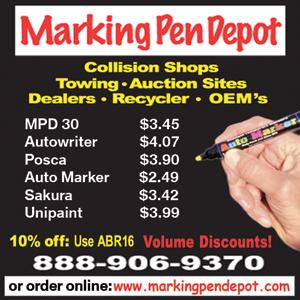
Drivers hitting the road for the Fourth of July holiday will find the gift of lower gas prices across most of the country. AAA forecasts more than 50 million people will celebrate the nation’s birthday by traveling, with a record 43.2 million going by car.
The national average for a gallon of gas fell four cents since June 22 to $3.54 as of June 29.
“Gas prices are $1.30 per gallon less this year than last, but they are still high compared to historical averages,” said Andrew Gross, AAA spokesperson. “The previous record average high price for gas on July 4 was $4.10 in 2008, while the low was $1.39 in 2001. Yet despite currently elevated prices, drivers are not cutting back on travel this summer.”
According to new data from the Energy Information Administration (EIA), gas demand decreased slightly from 9.38 to 9.31 million b/d over the same
week. Meanwhile, total domestic gasoline stocks increased by 600,000 bbl to 220 million bbl. Lower gas demand amid increasing supply has helped to limit pump price increases. If demand remains low, pump prices will likely continue to decline through next week.
The June 29 national average of $3.54 is four cents less than a month ago but $1.32 less than a year ago.
Since June 22, these 10 states have seen the largest decreases in their averages: in their averages: Arizona (-16 cents), Ohio (-11 cents), Indiana (-11 cents), Wisconsin (-11 cents), Illinois (-9 cents), Kentucky (-6 cents), Nevada (-6 cents), Georgia (-6 cents), Utah (-6 cents) and Florida (-5 cents).
The nation’s top 10 least expensive markets: Mississippi ($2.97), Louisiana ($3.08), Alabama ($3.10), Tennessee ($3.10), Arkansas ($3.11), South Carolina ($3.17), Texas ($3.18), Oklahoma ($3.22), Georgia ($3.23) and North Carolina ($3.25).
Source: AAA

Ford Motor Company, the Ford Fund and Team Rubicon on June 20 announced Team Rubicon Powered by Ford, a new disaster relief initiative that will serve the growing number of communities across the U.S. impacted by hurricanes, tornadoes, earthquakes and wildfires.
According to studies, 90% of U.S. counties experienced a federal climate disaster between 2011-2021. Ford’s investment— which includes a fleet of vehicles, a $2.5 million philanthropic donation, and a commitment to deploying employee volunteers— greatly expands Team Rubicon’s ability to provide no-cost services to vulnerable communities in the wake of these disasters and crises.
“At the heart of Ford is our commitment to help out our communities in times of need and make it possible for our employees to volunteer their time and talent to help others,” said Bill Ford, executive chair of Ford Motor Company. “The reality is weather-related disasters in the U.S. are becoming more frequent
and more severe. That is why we are significantly expanding our relationship with Team Rubicon, donating a fleet of vehicles and deploying volunteers where they are needed most.”
across the country and around the world. From Hurricane Harvey in 2017 to the Texas ice storms in 2021 to deadly storms in eastern Kentucky in 2022, Ford has shown up for communities in need by deploying vehicles to provide emergency transportation and power, delivering essential goods and funding direct service providers.
By pairing the skills and experiences of military veterans with first responders, medical professionals and technology solutions, Team Rubicon aims to provide the greatest service and impact possible.
Team Rubicon Powered by Ford builds on nearly 25 years of disaster relief efforts by Ford. The company has invested in disaster relief efforts since 1999, when a catastrophic earthquake struck Turkey, and Ford mobilized vehicles, volunteers and other lifesaving aid in the region.
Since then, Ford has consistently supported disaster relief efforts in communities
Over the last few years, the Ford Fund has donated $7 million to disaster relief efforts globally, including $1.5 million in previous investments to Team Rubicon.
Team Rubicon is a veteranled humanitarian organization that serves global communities before, during and after disasters and crises. Founded following the Haiti earthquake in 2010, the organization has grown to more than 160,000 volunteers across the U.S. and has launched more than 1,100 operations domestically and internationally.
“It starts with shared values— Team Rubicon and Ford both embrace the ethos of service, a vision of creating and strengthening communities— we’re committed to service,” said Art delaCruz , Team Rubicon CEO and retired U.S. Naval officer. “This Ford fleet and its innovative technology, in addition to the Ford Fund investment, exponentially increases our ability to reach those who have been impacted by disasters and crises. We are thankful for the longtime support and generous investment from the Ford Motor Company and the Ford Fund, and look forward to showcasing the possibilities that can happen when purposedriven companies team up with humanitarian organizations.”
Source: Ford Motor Company








